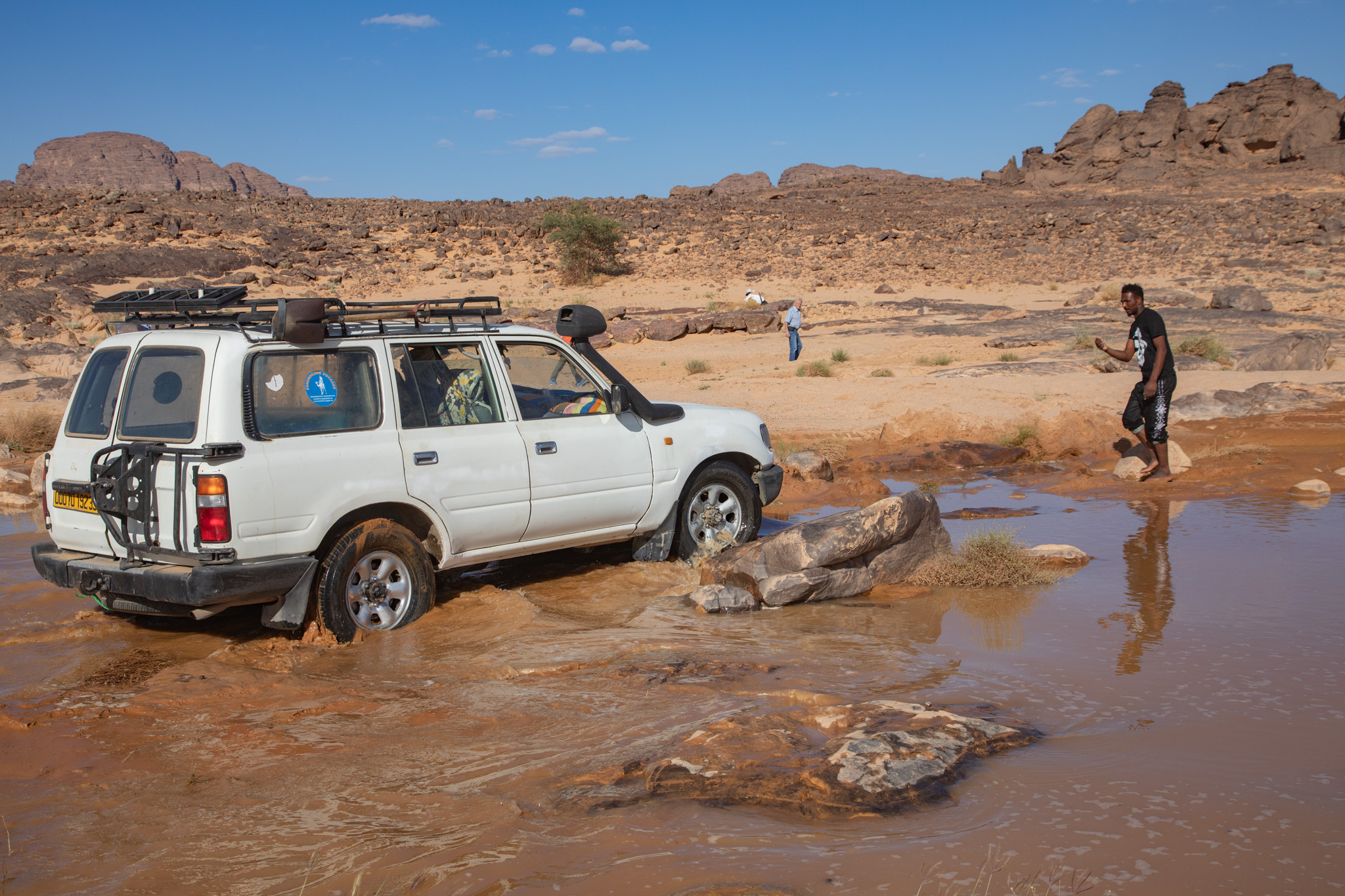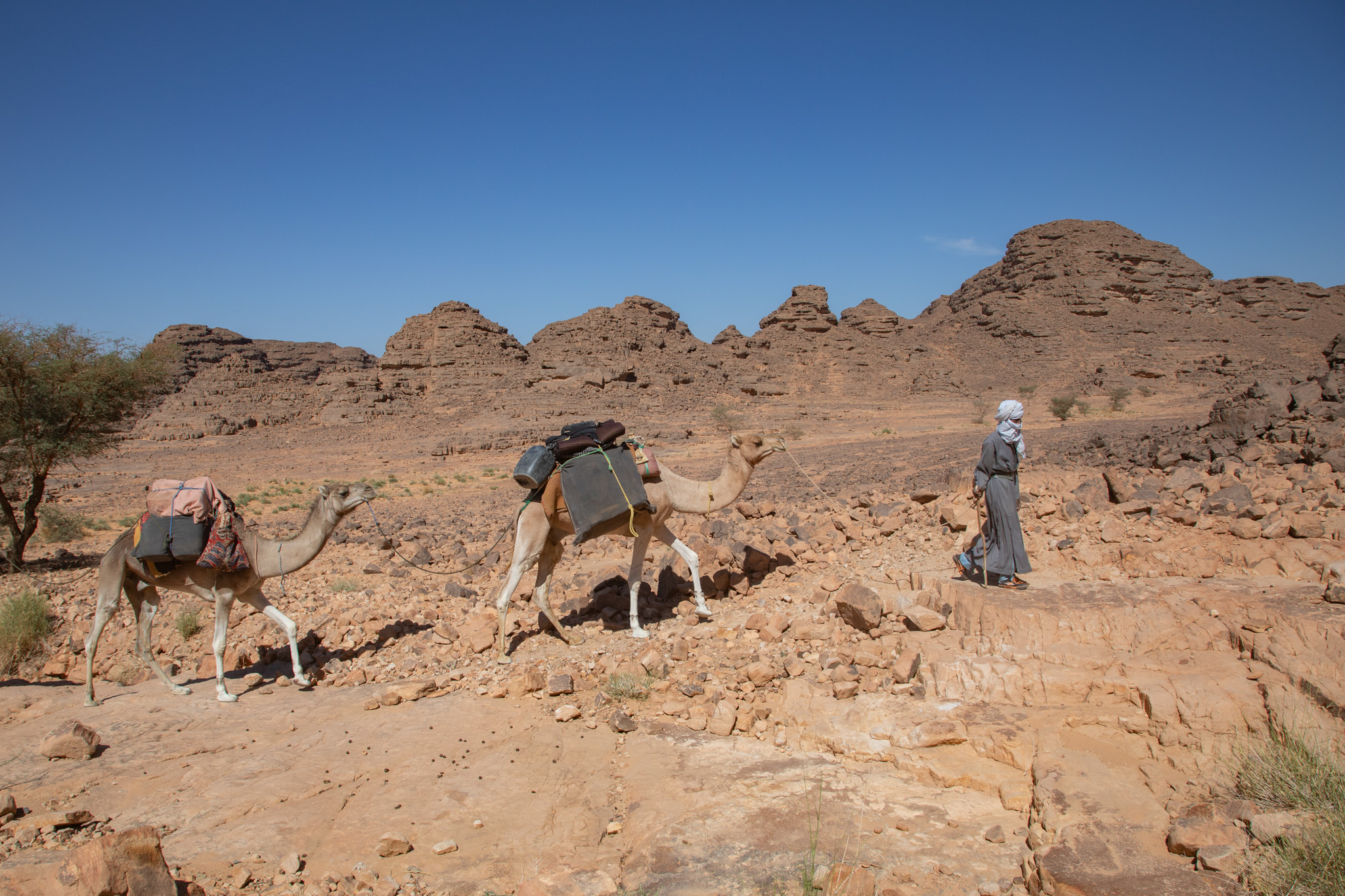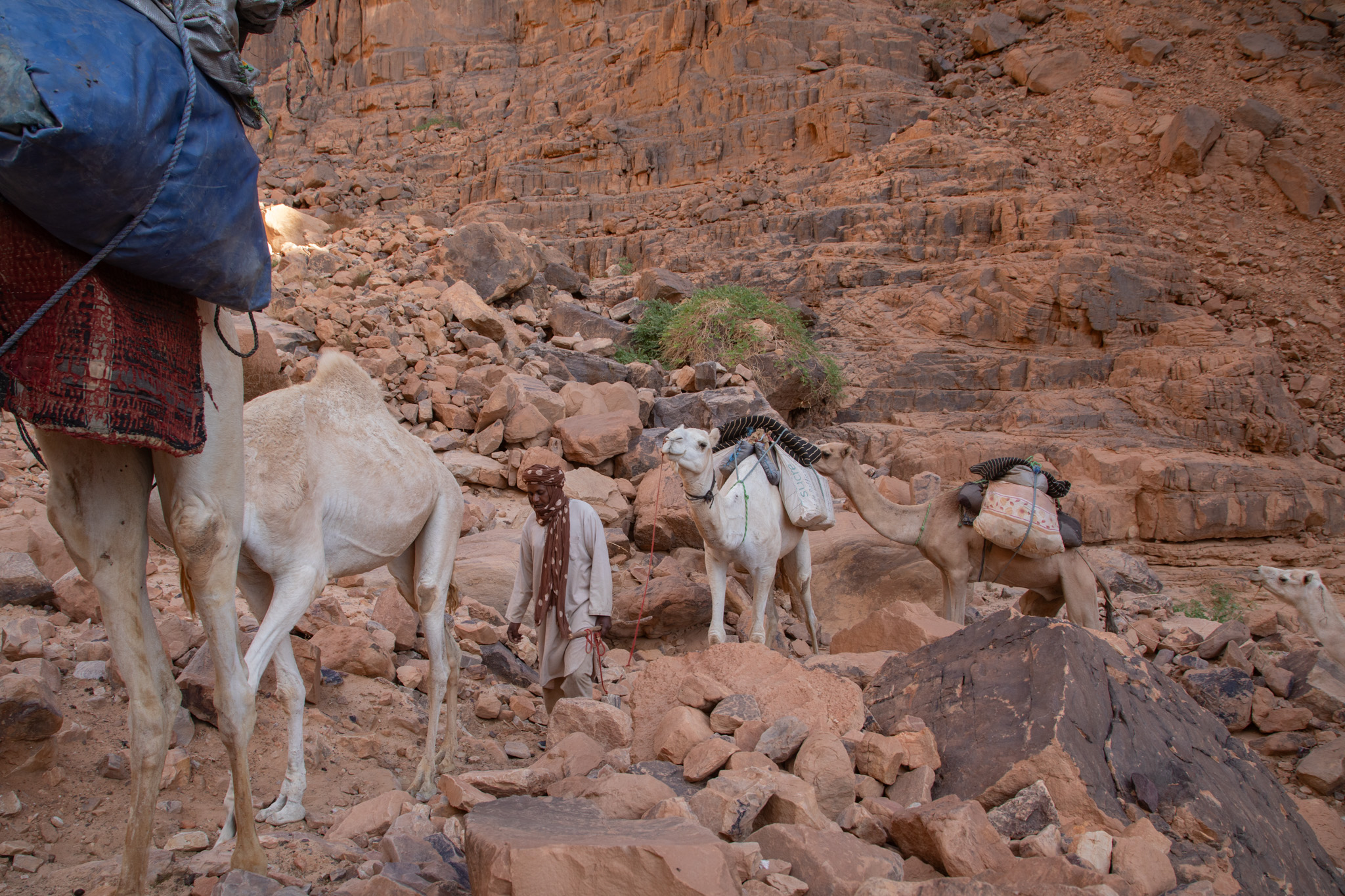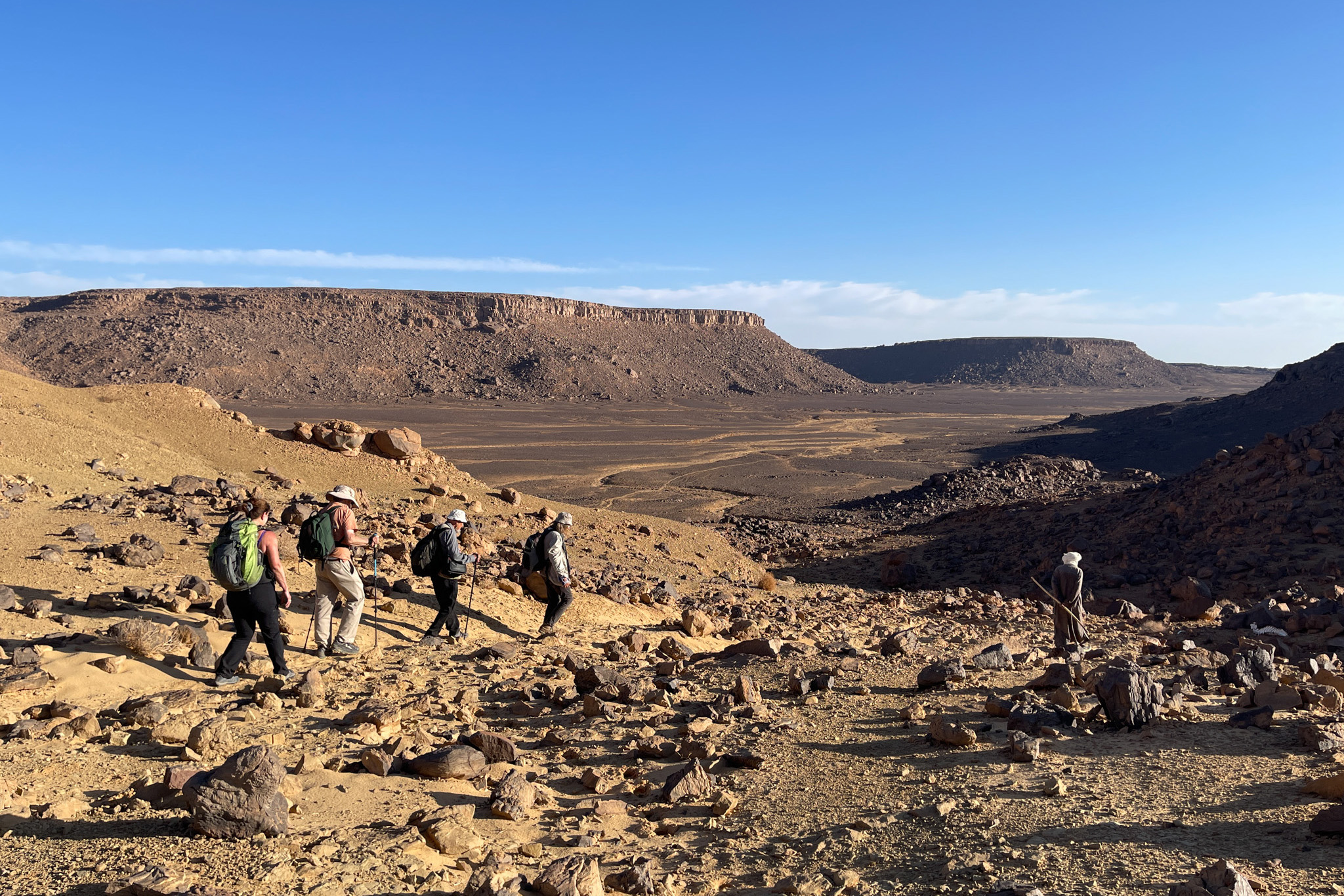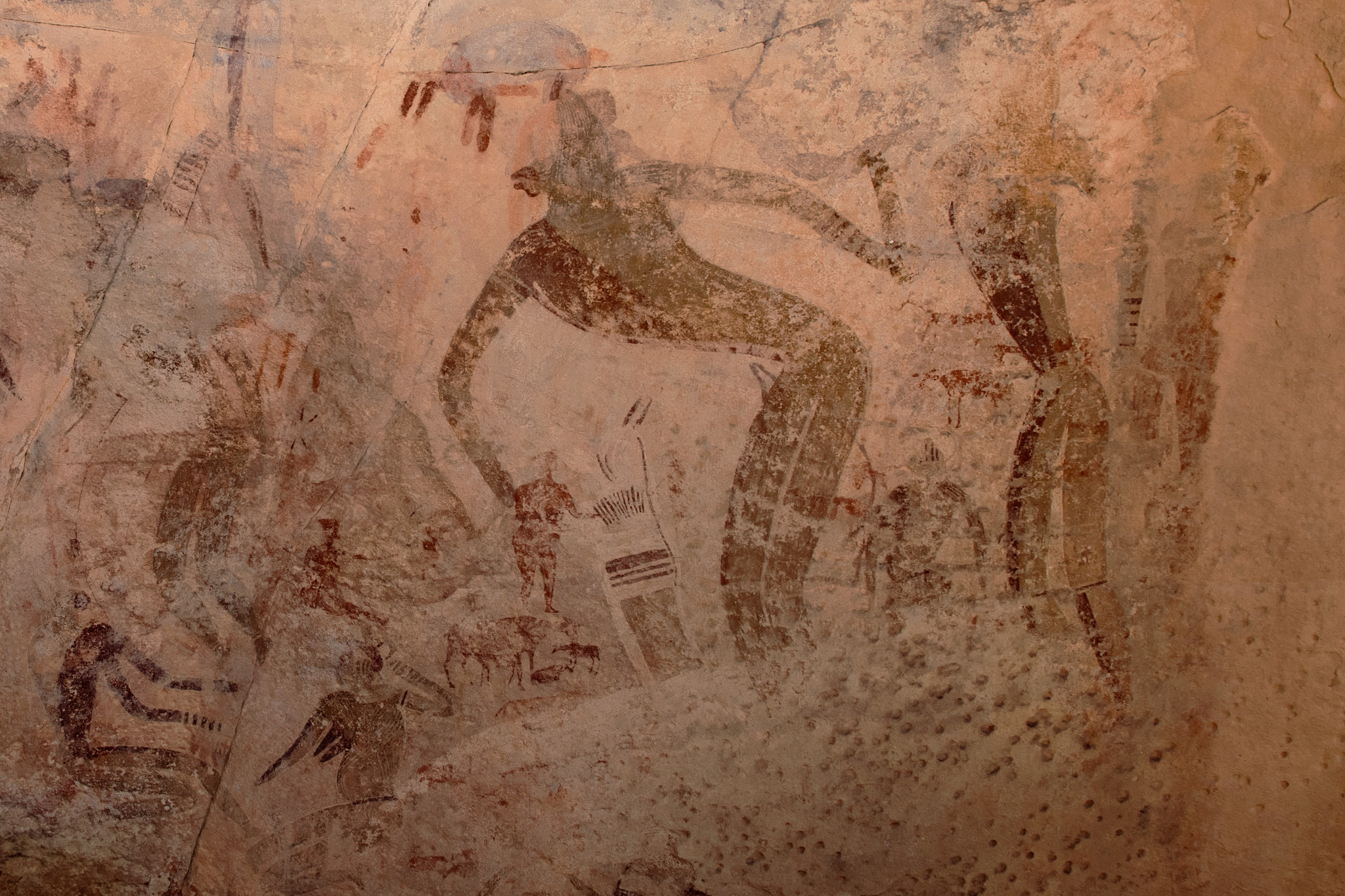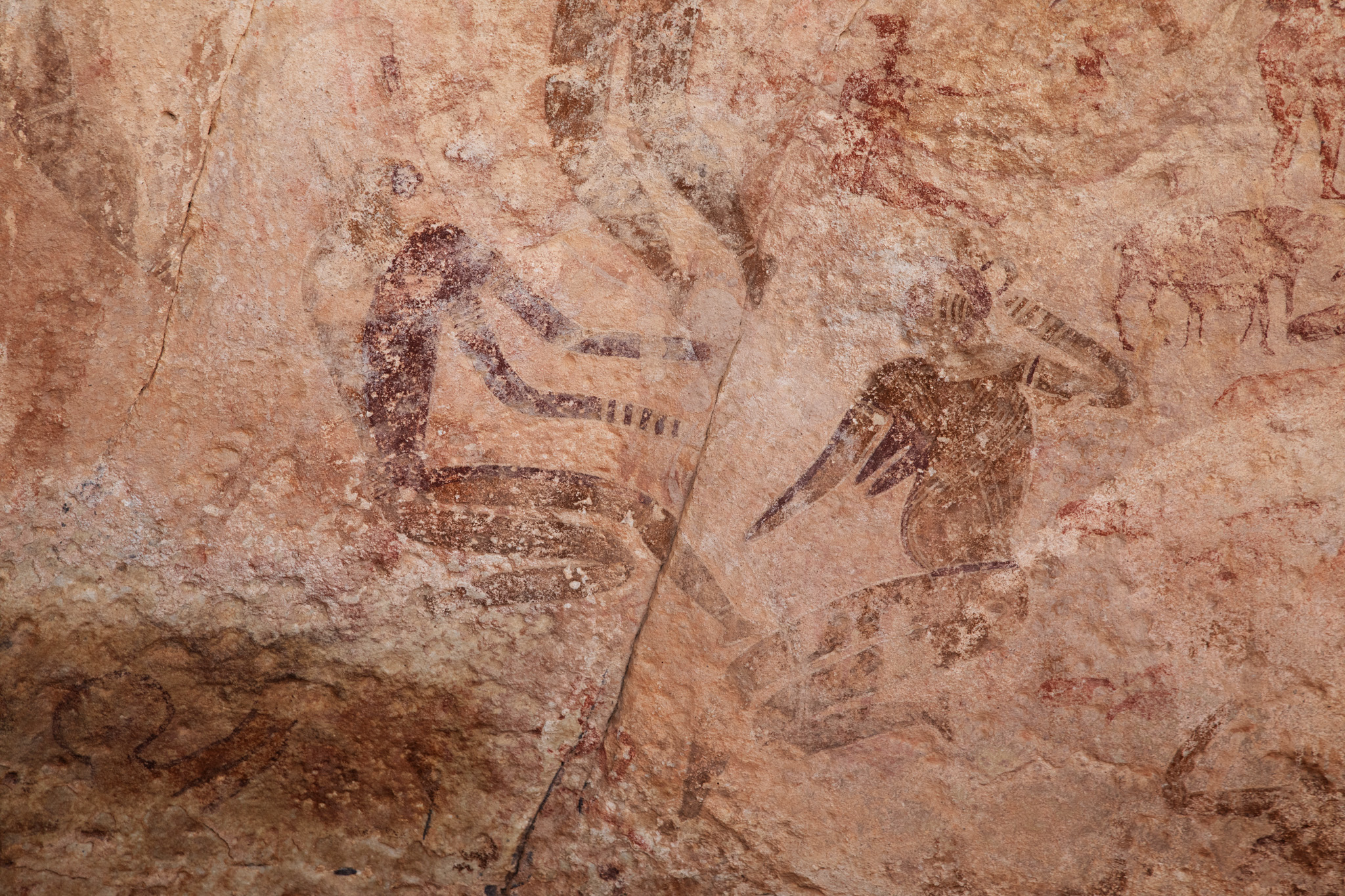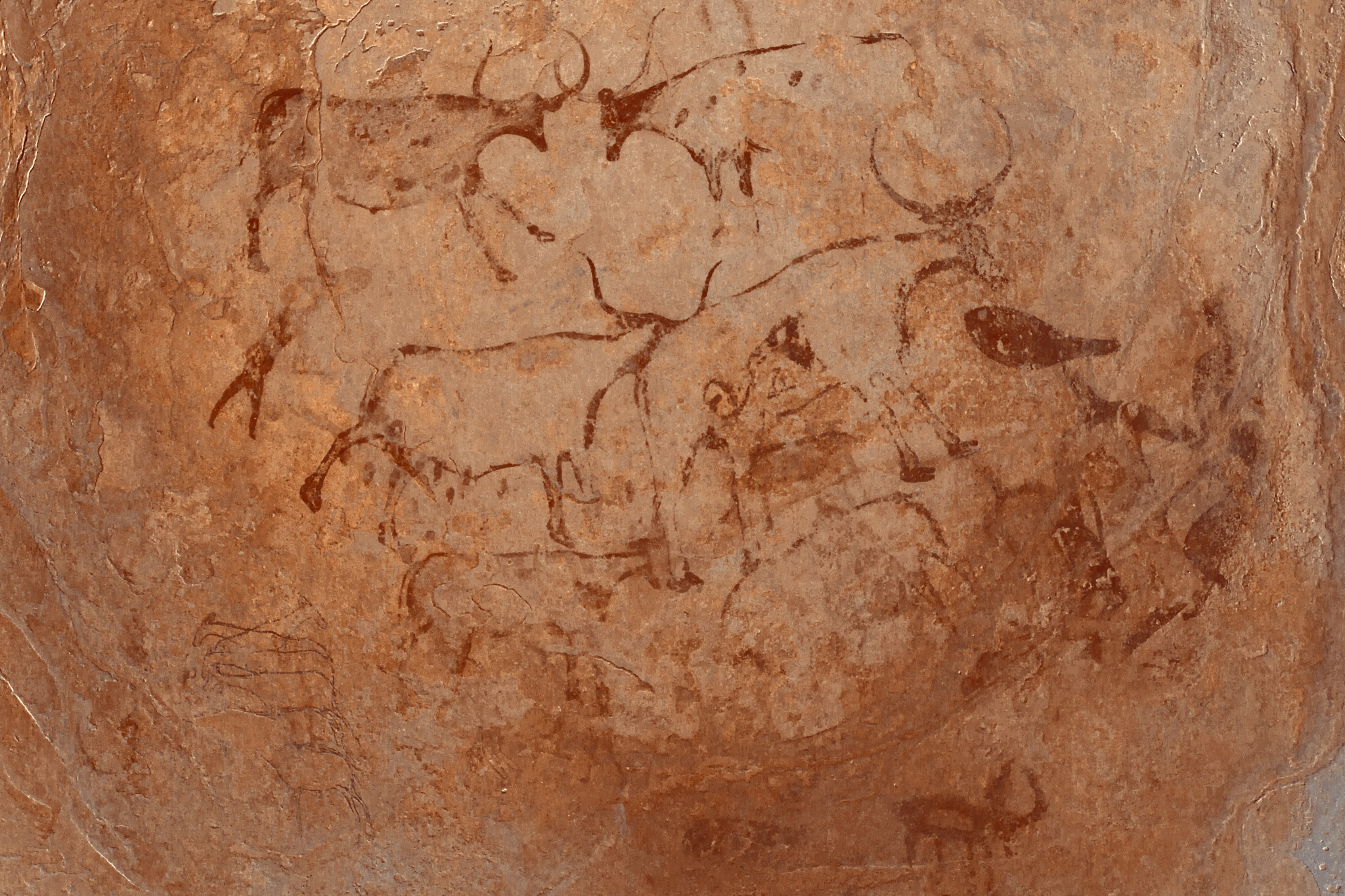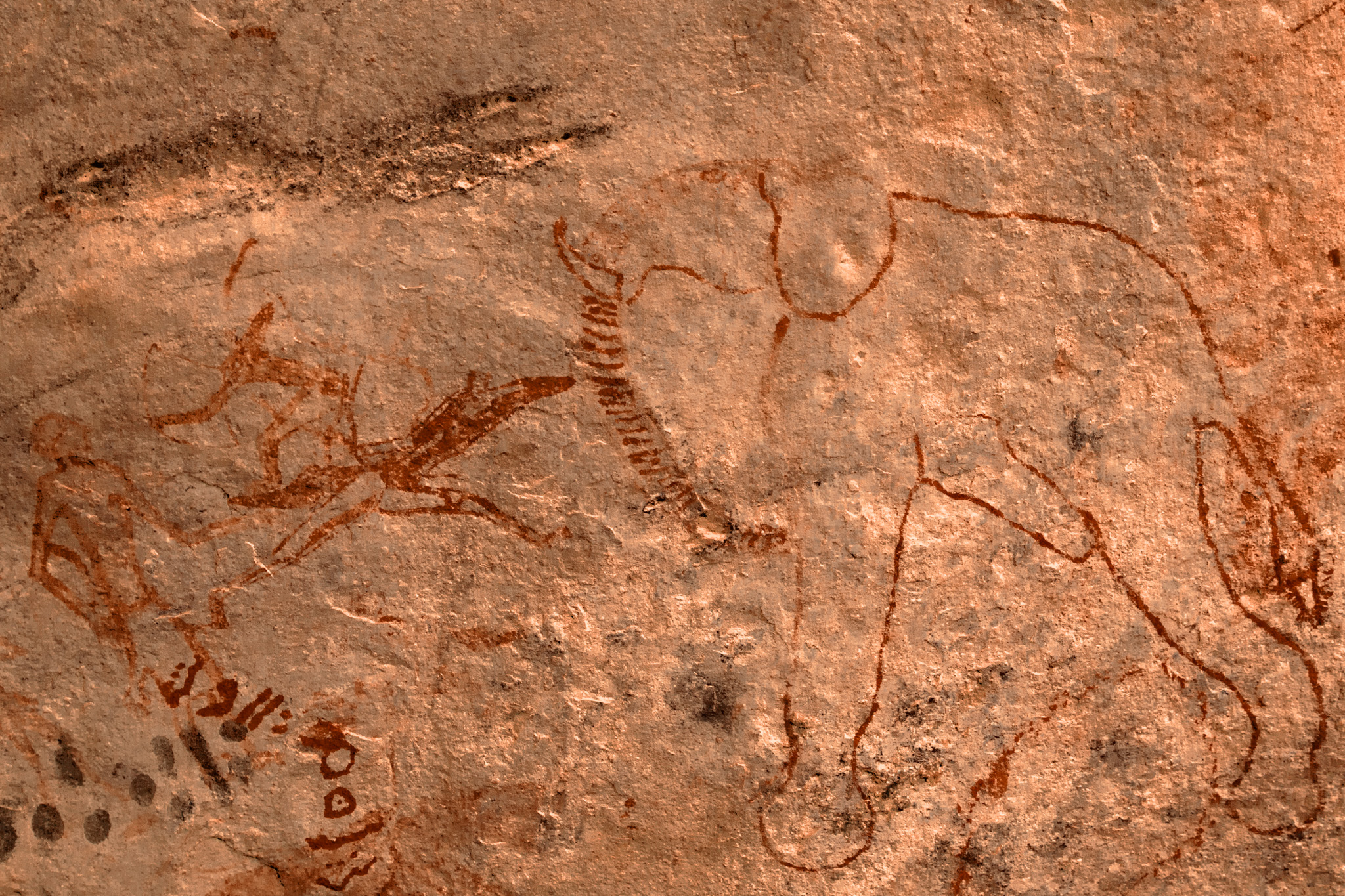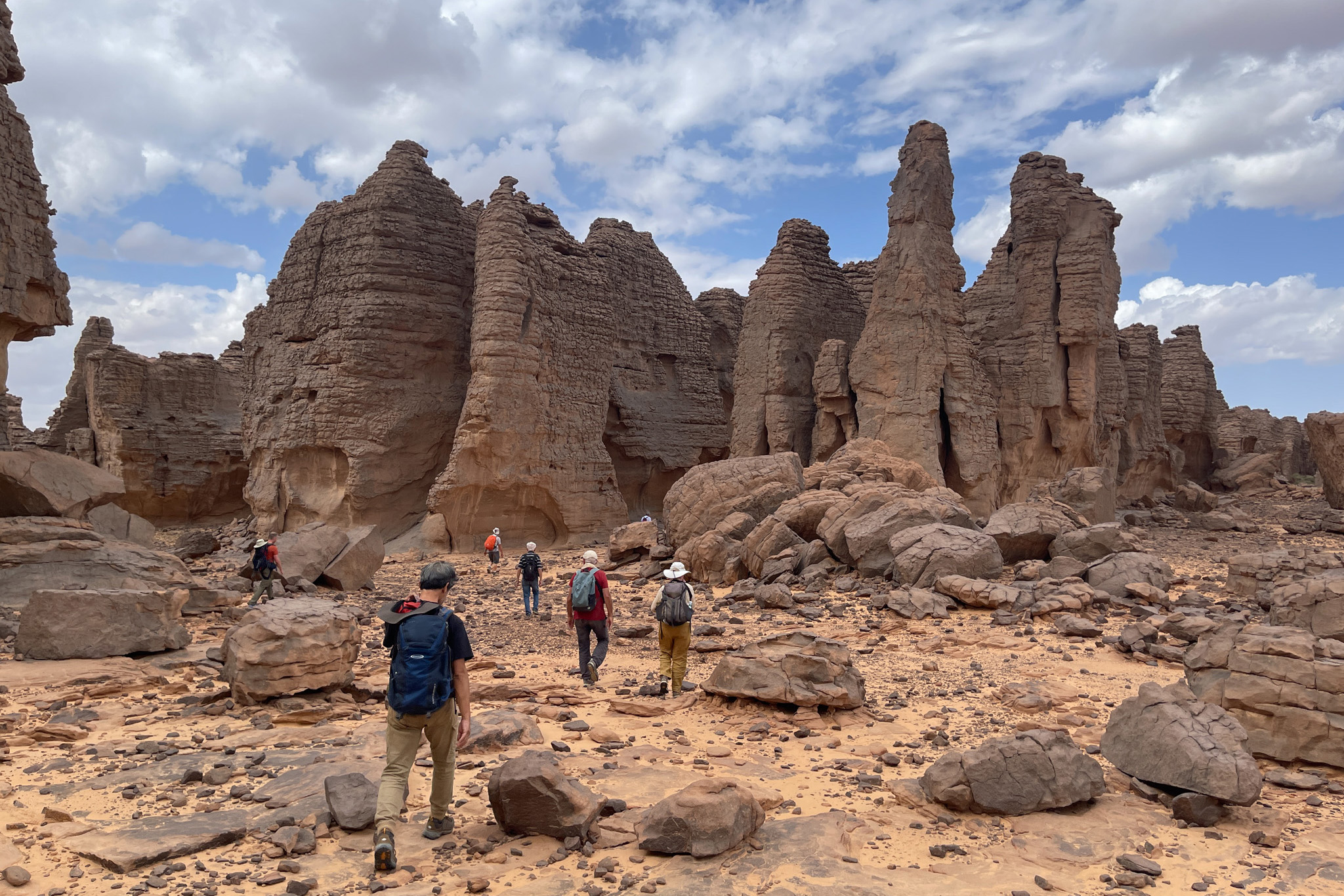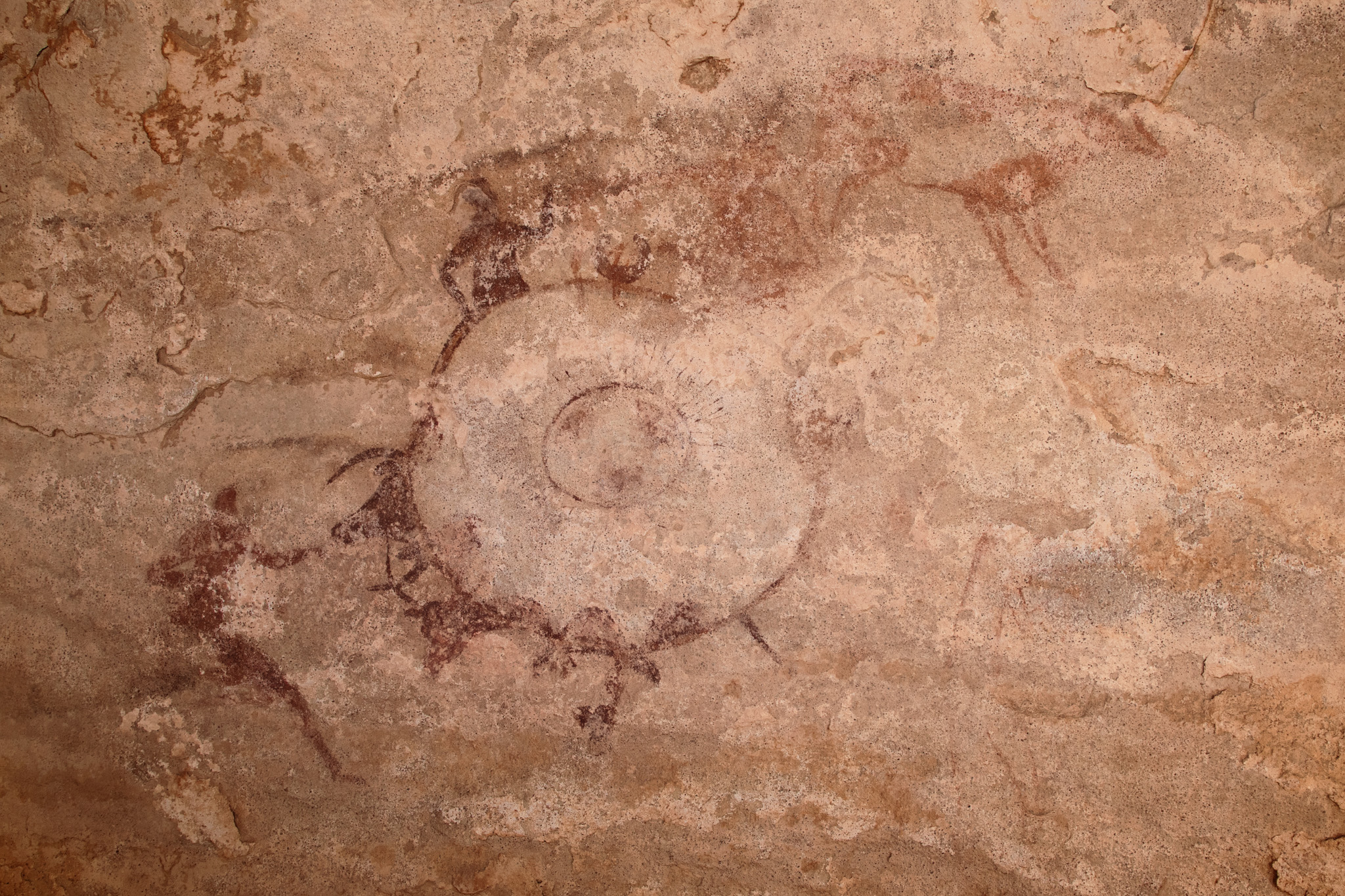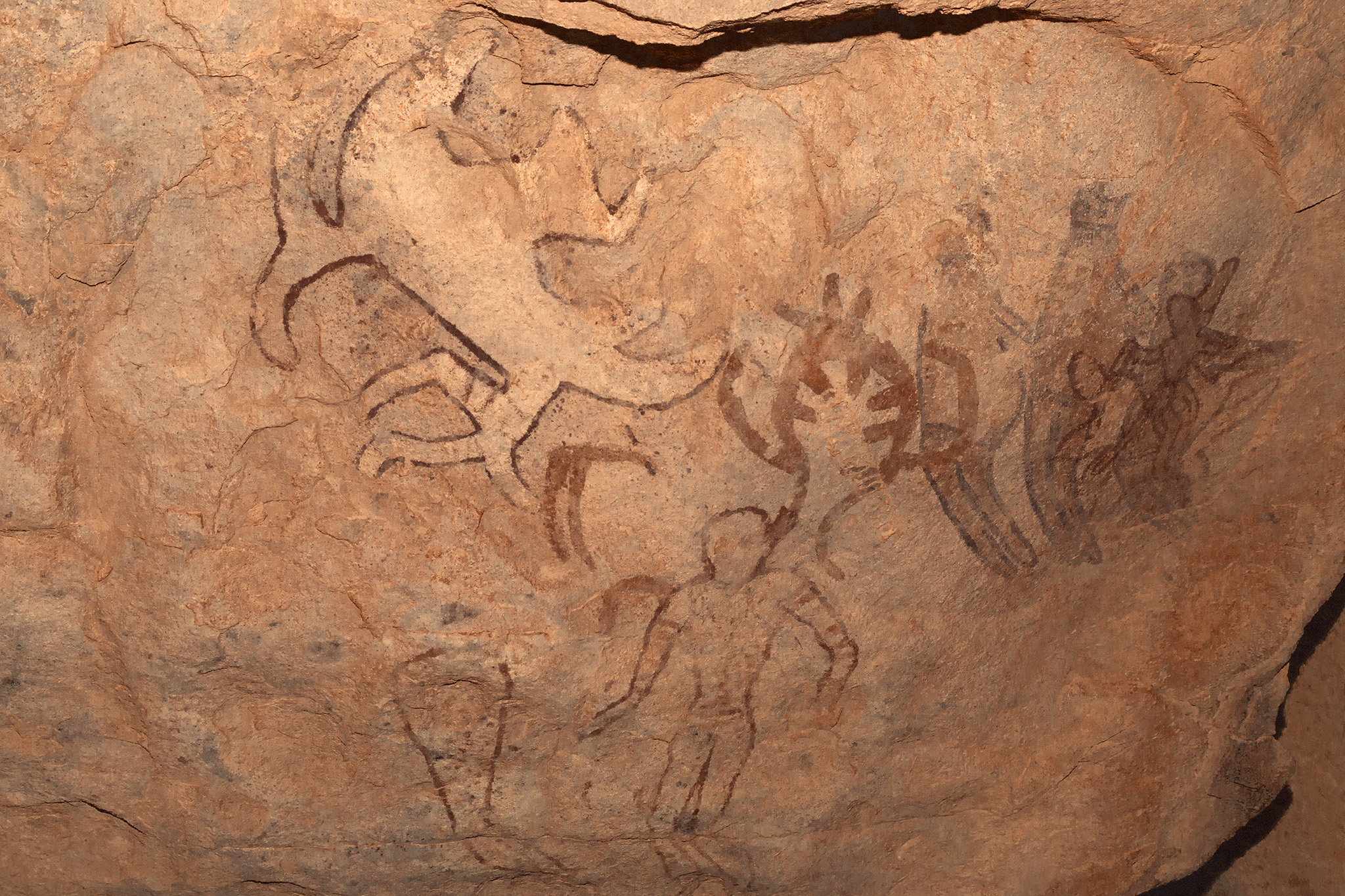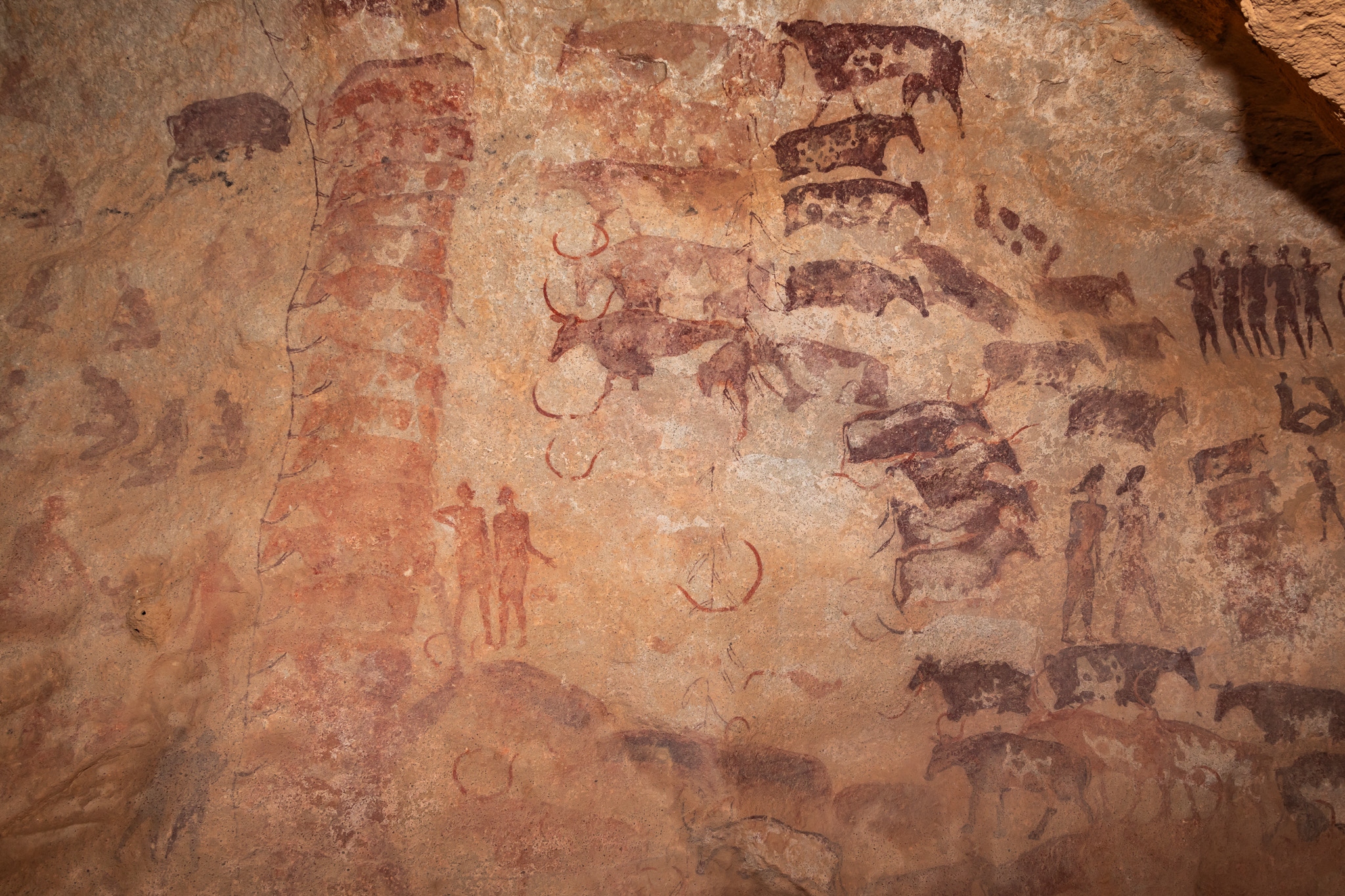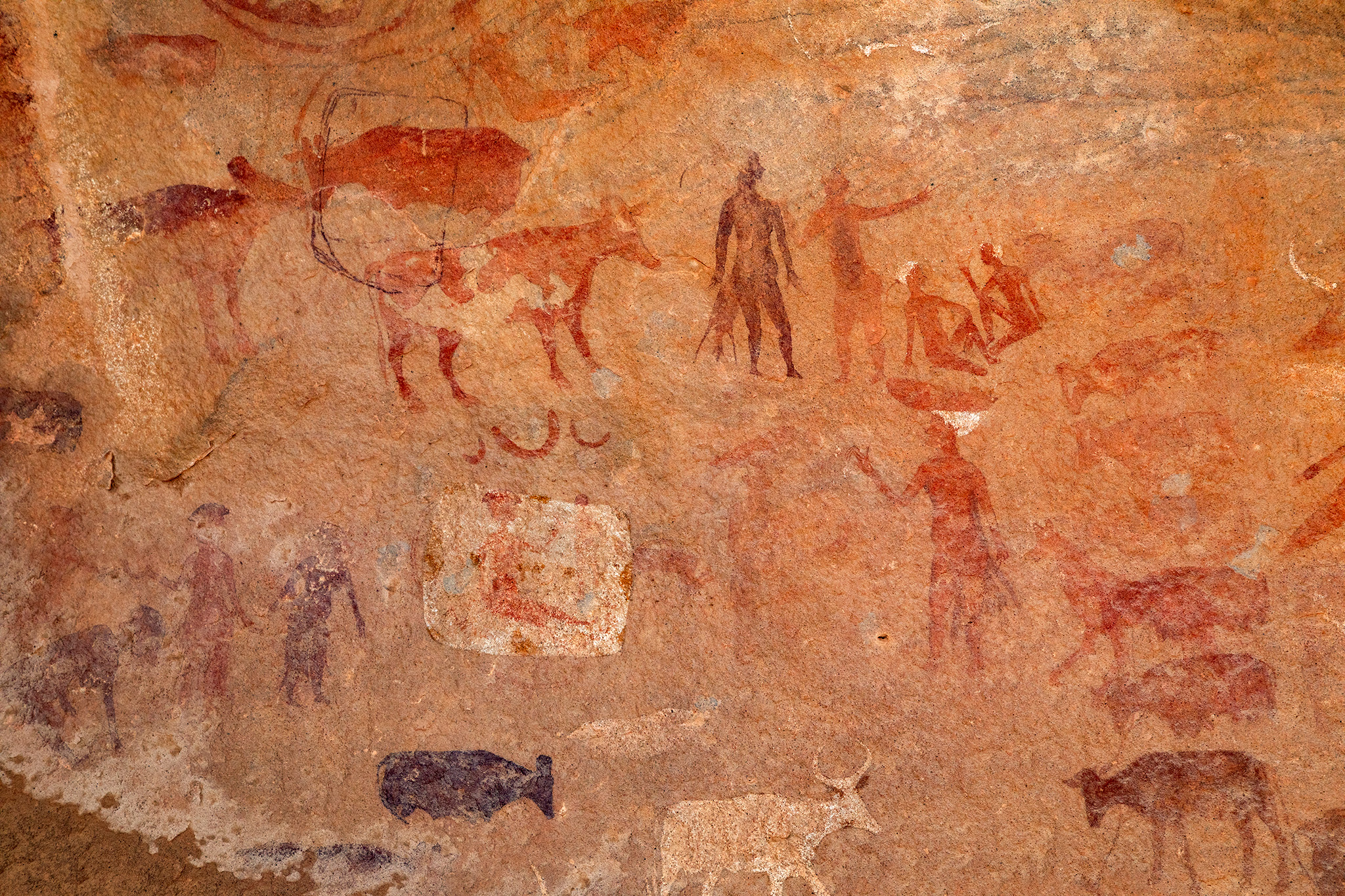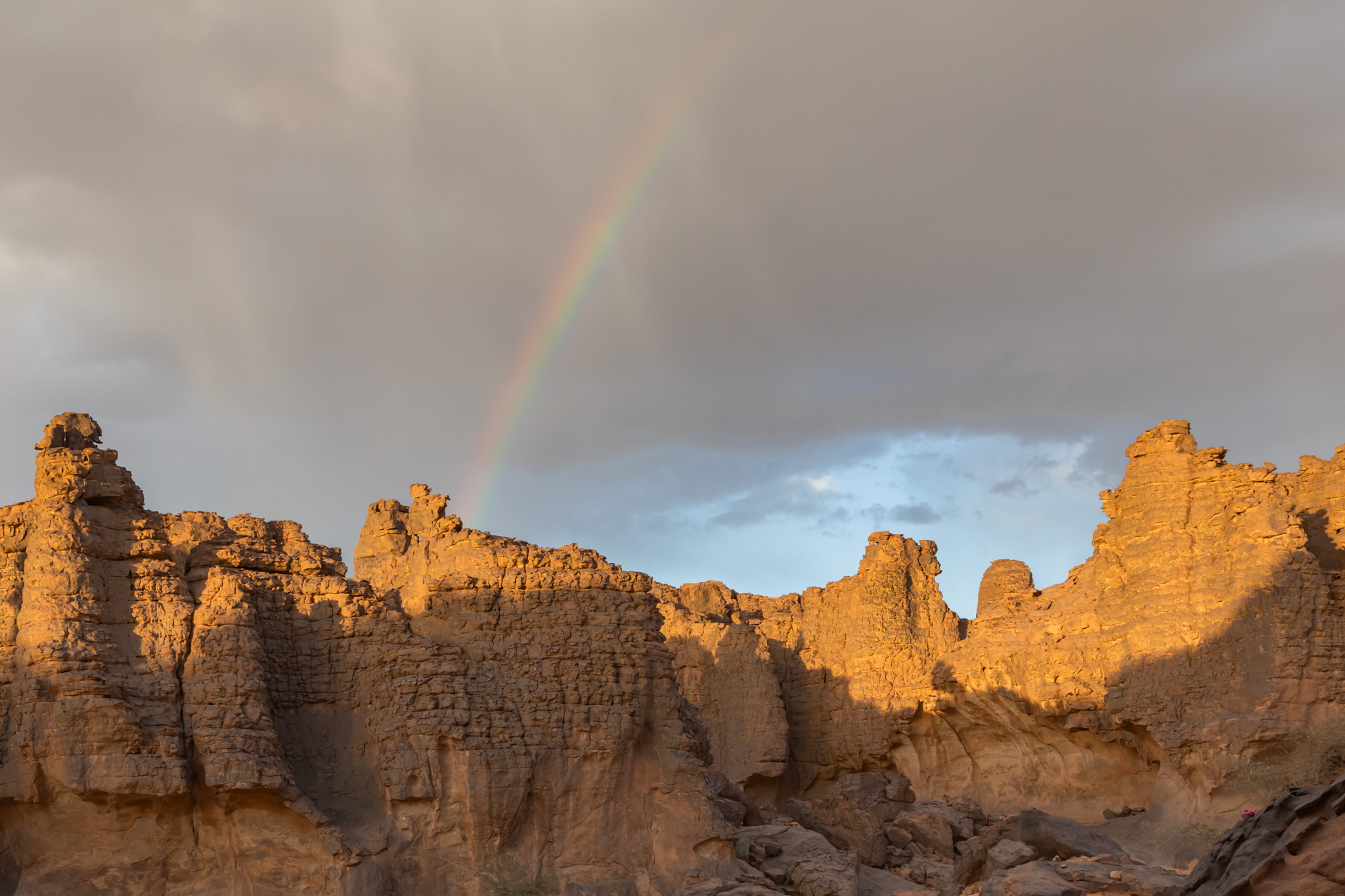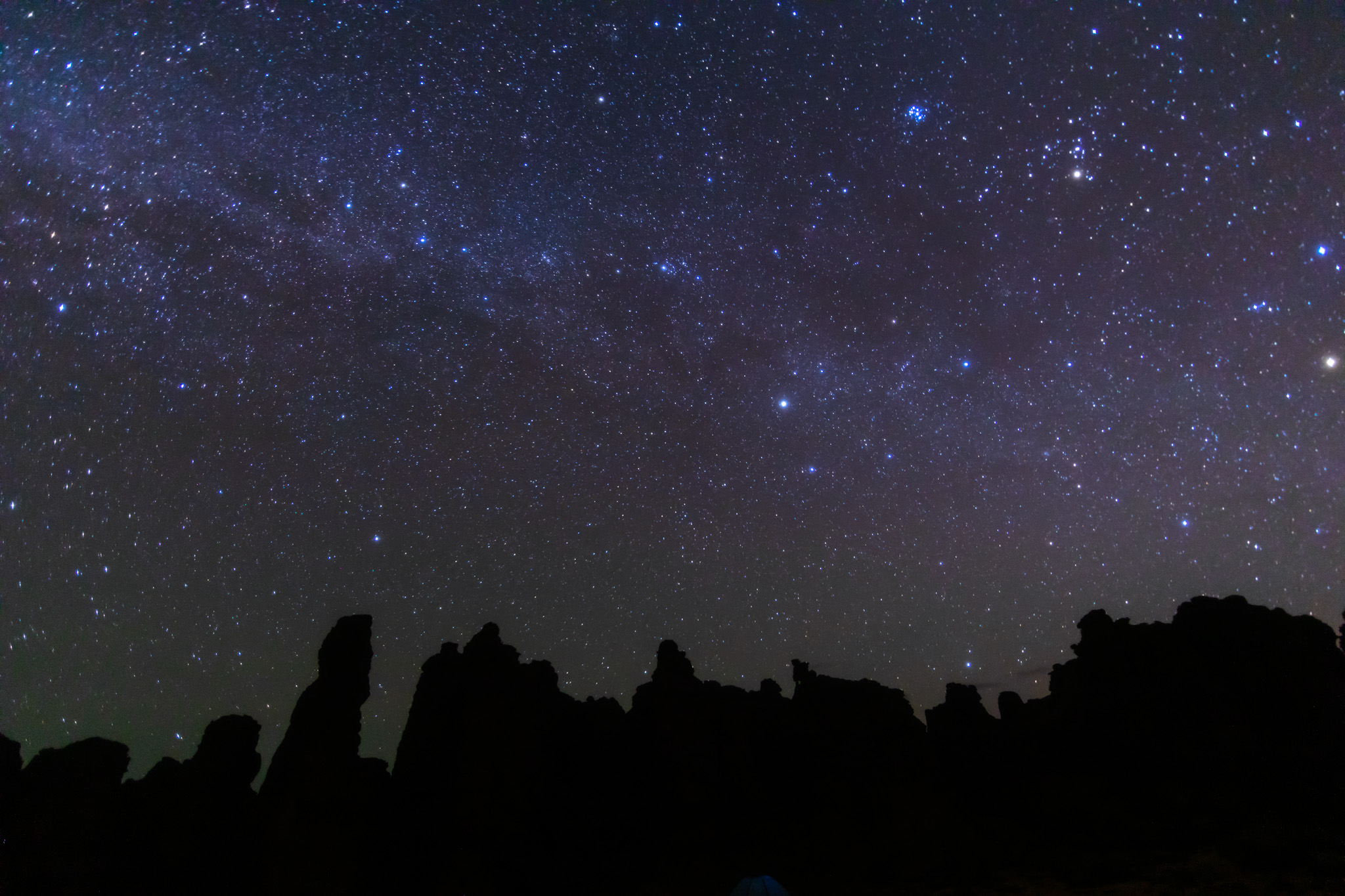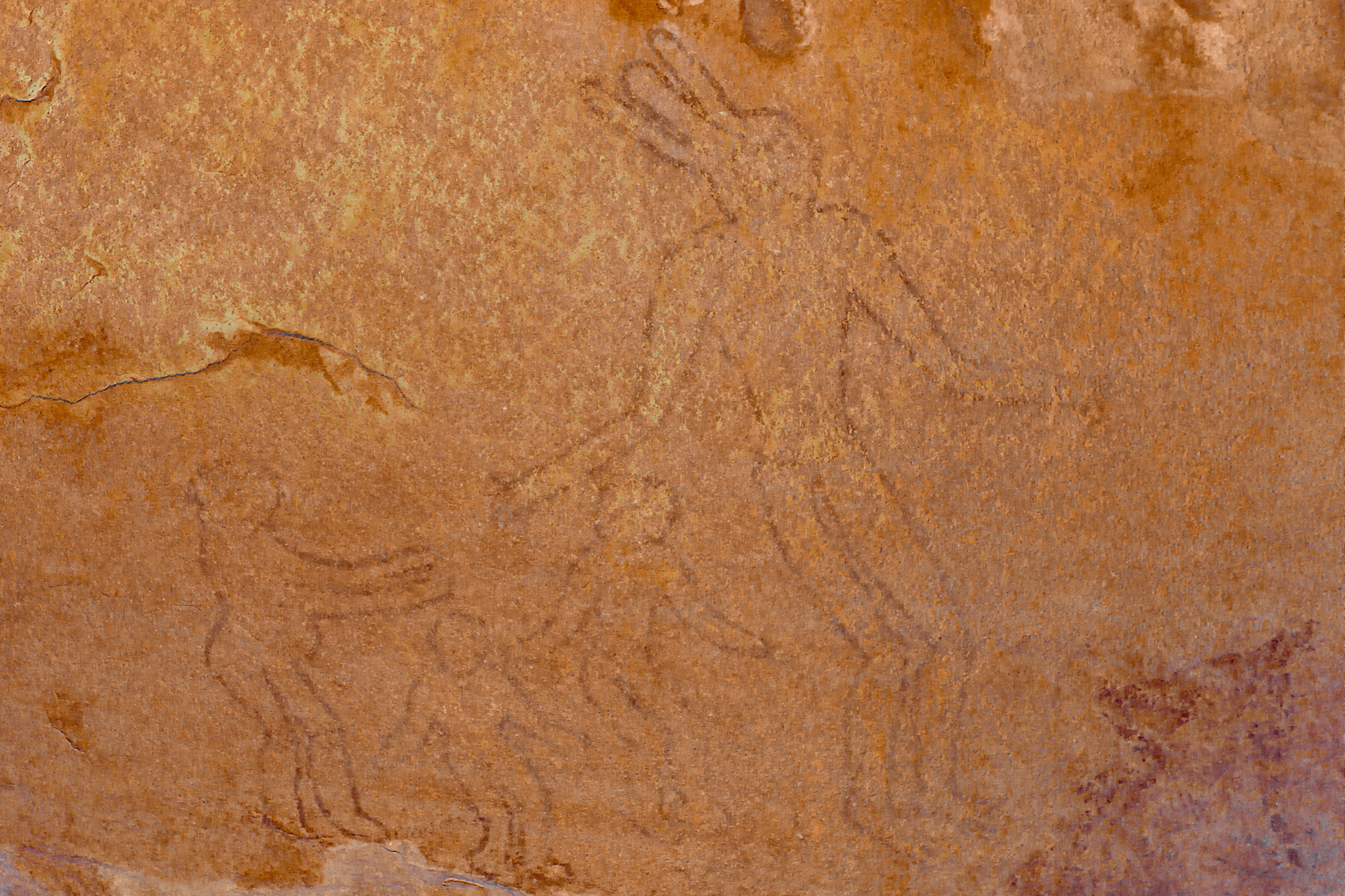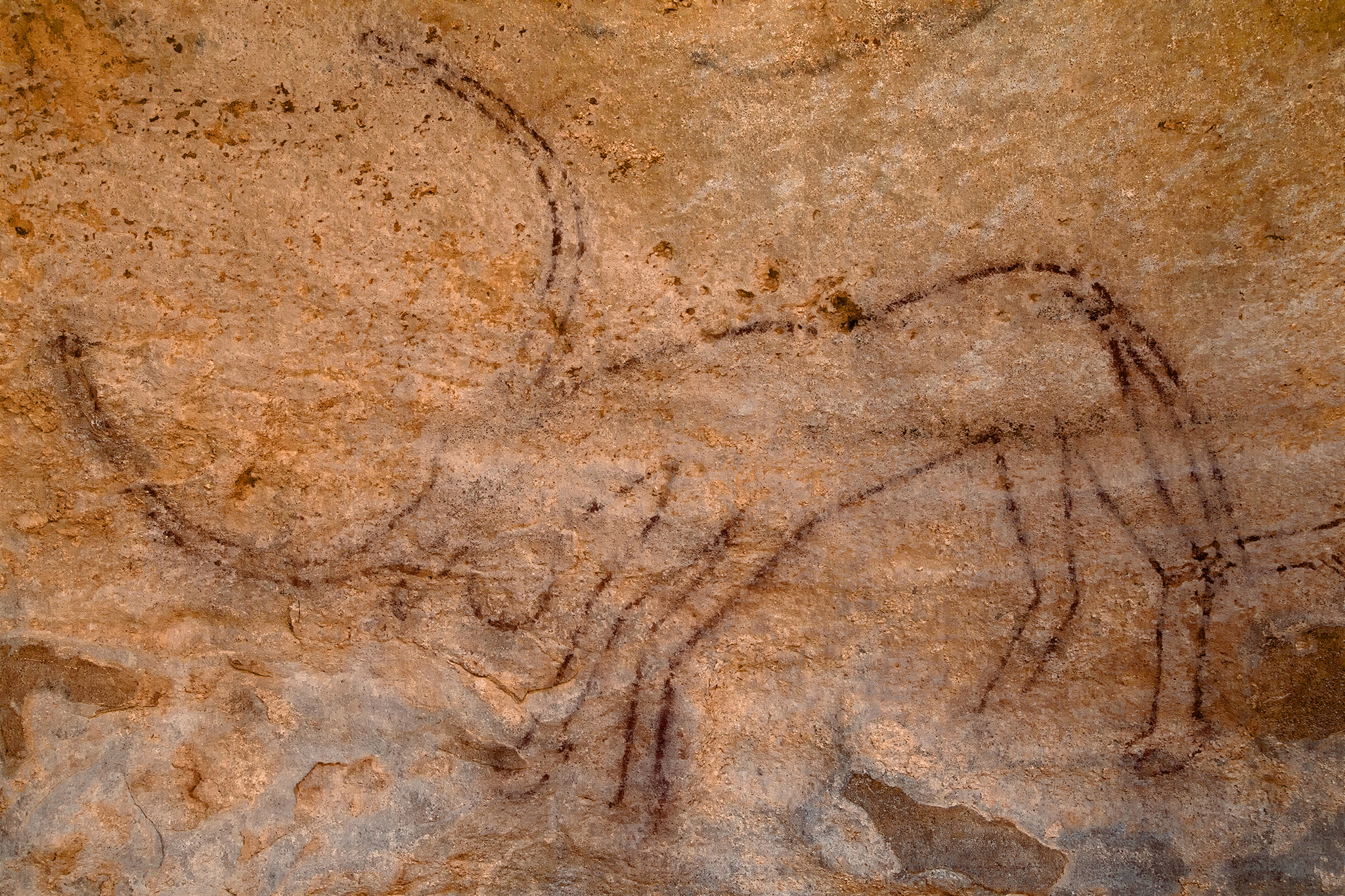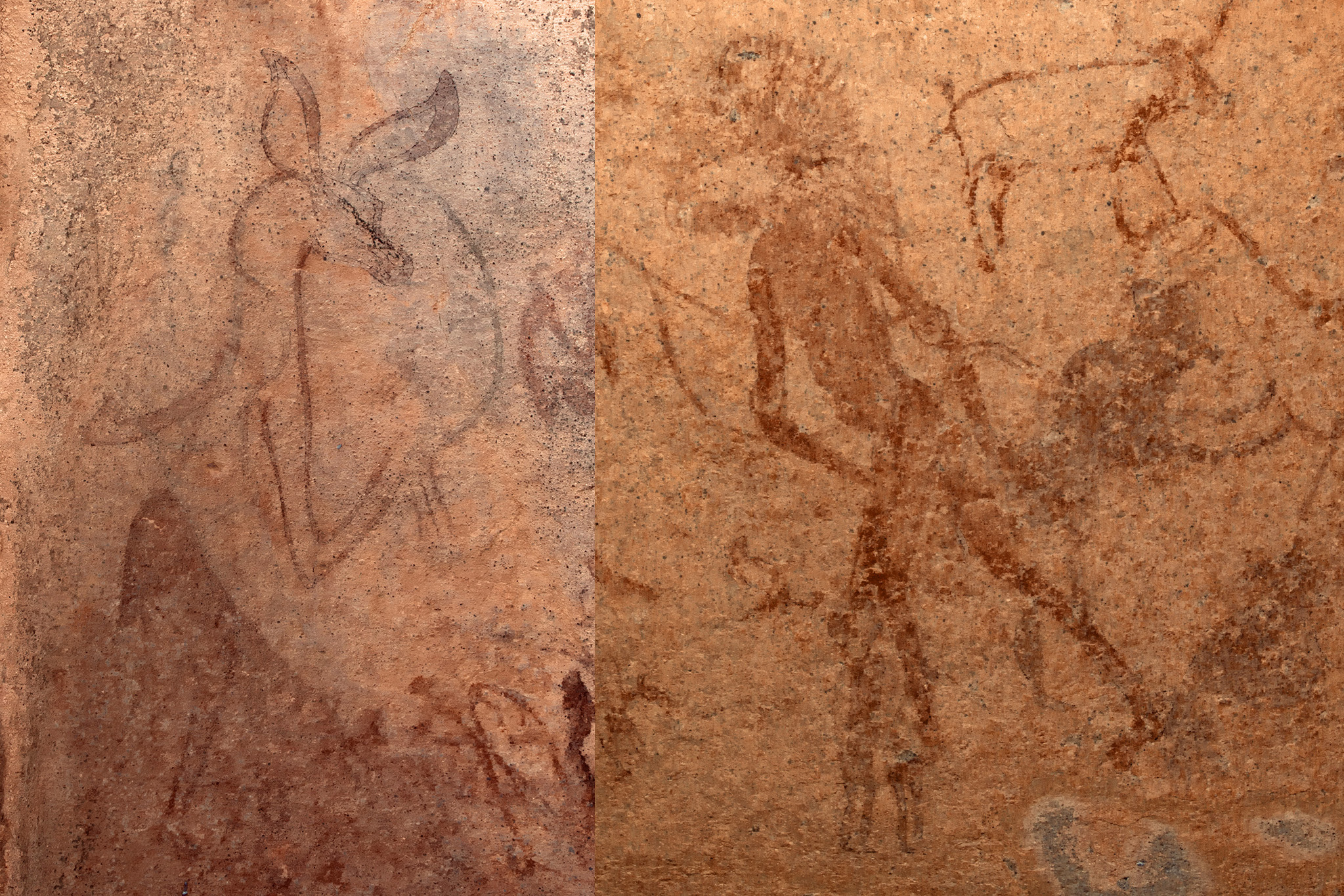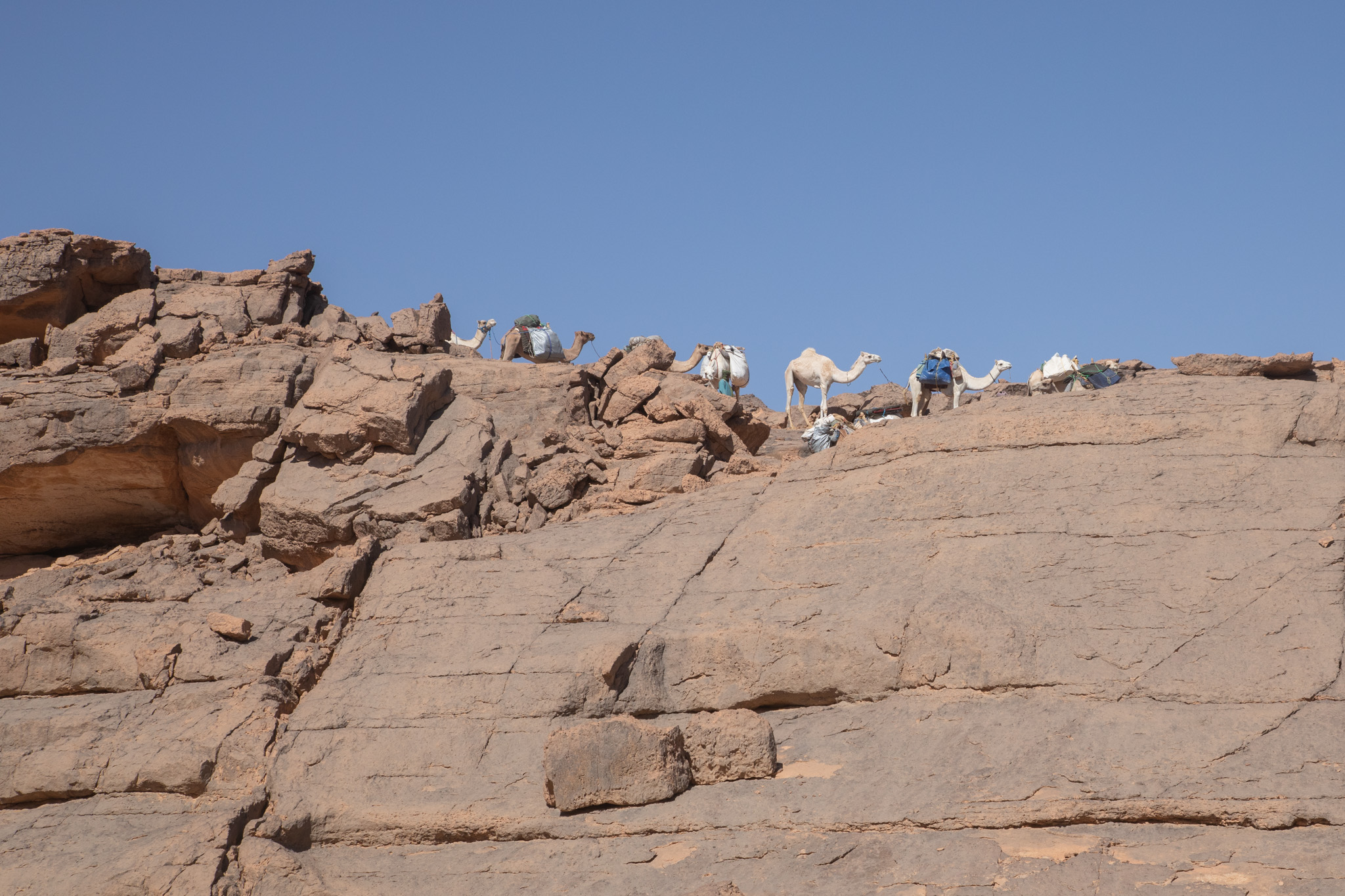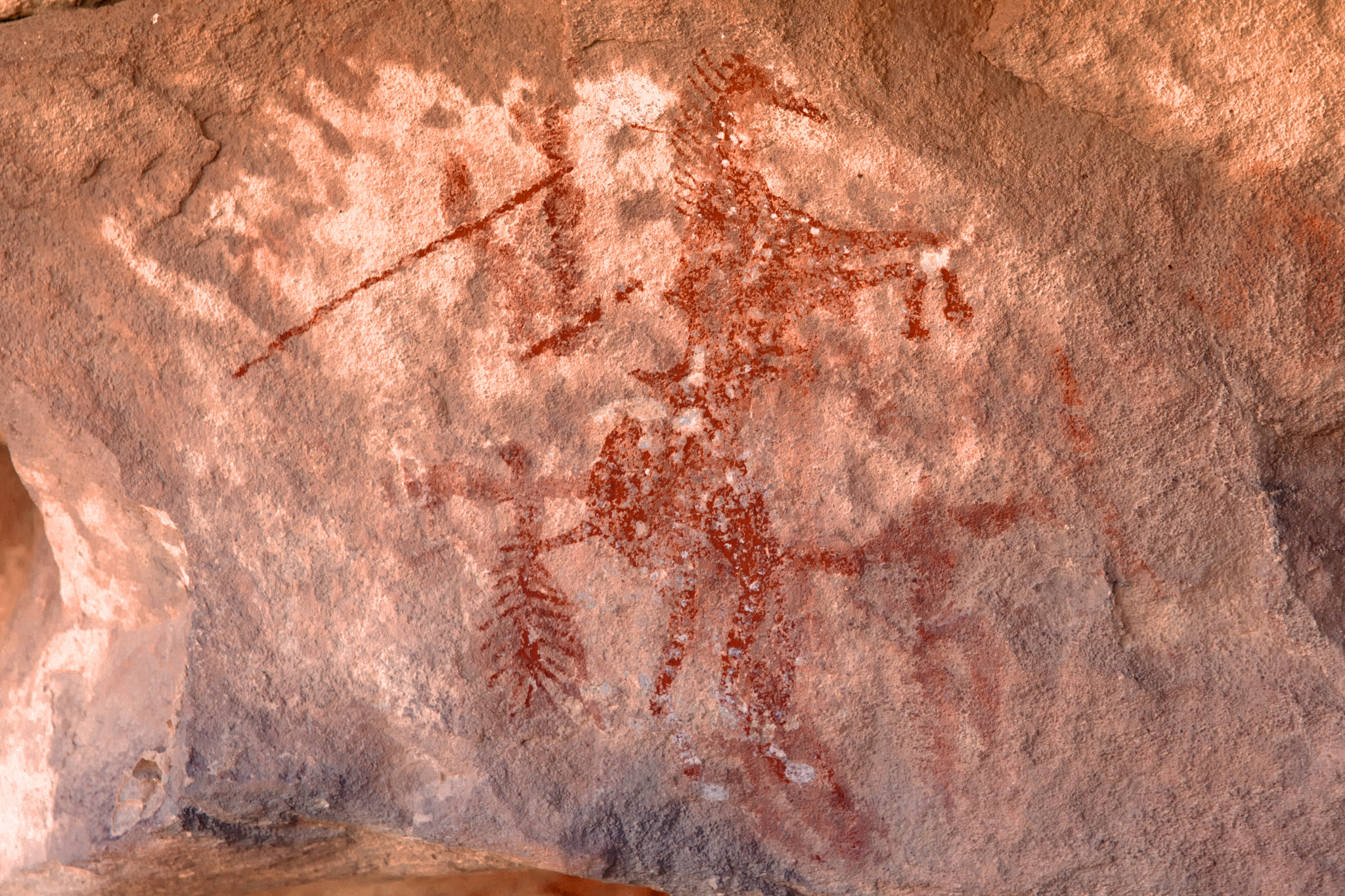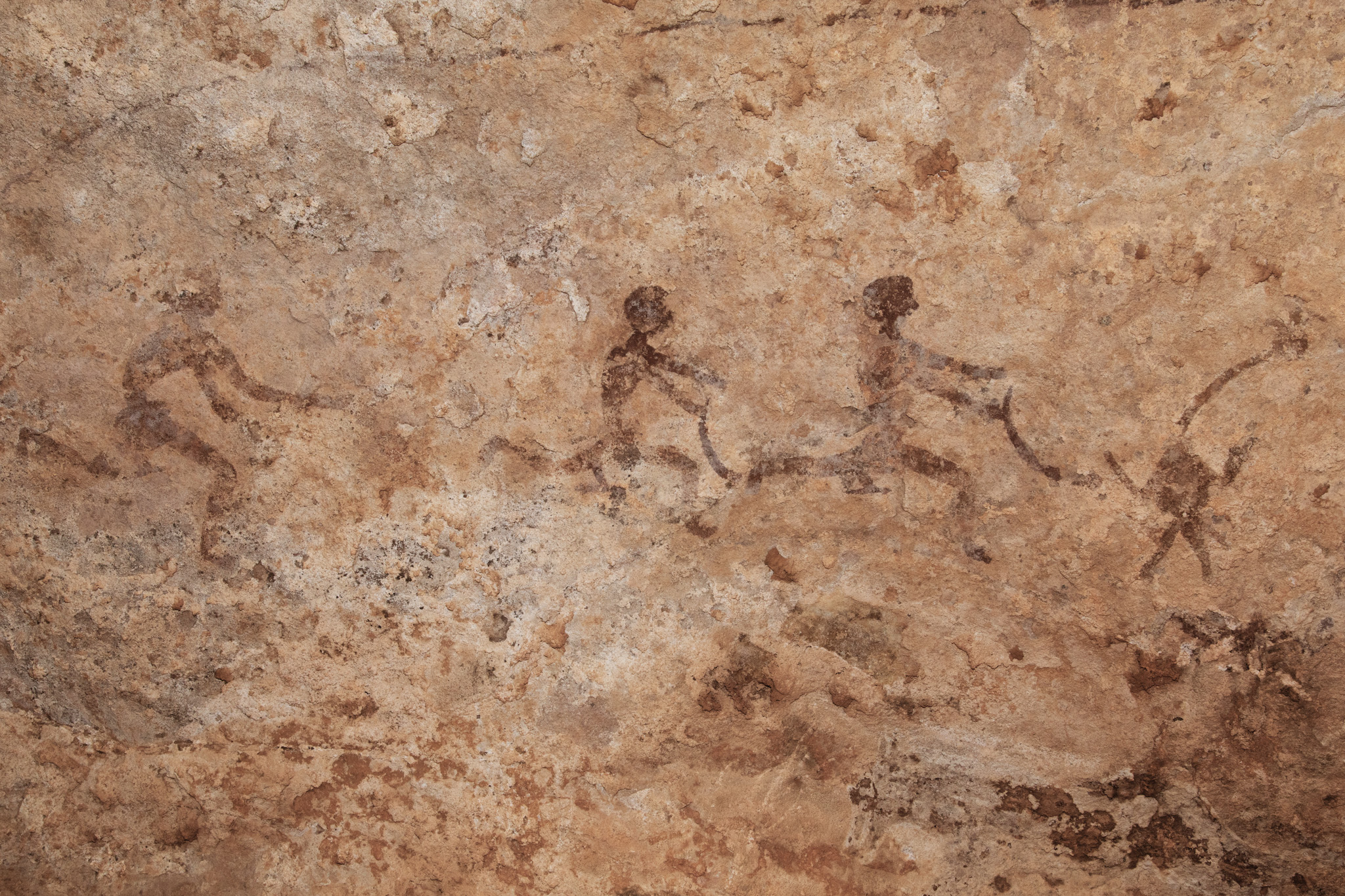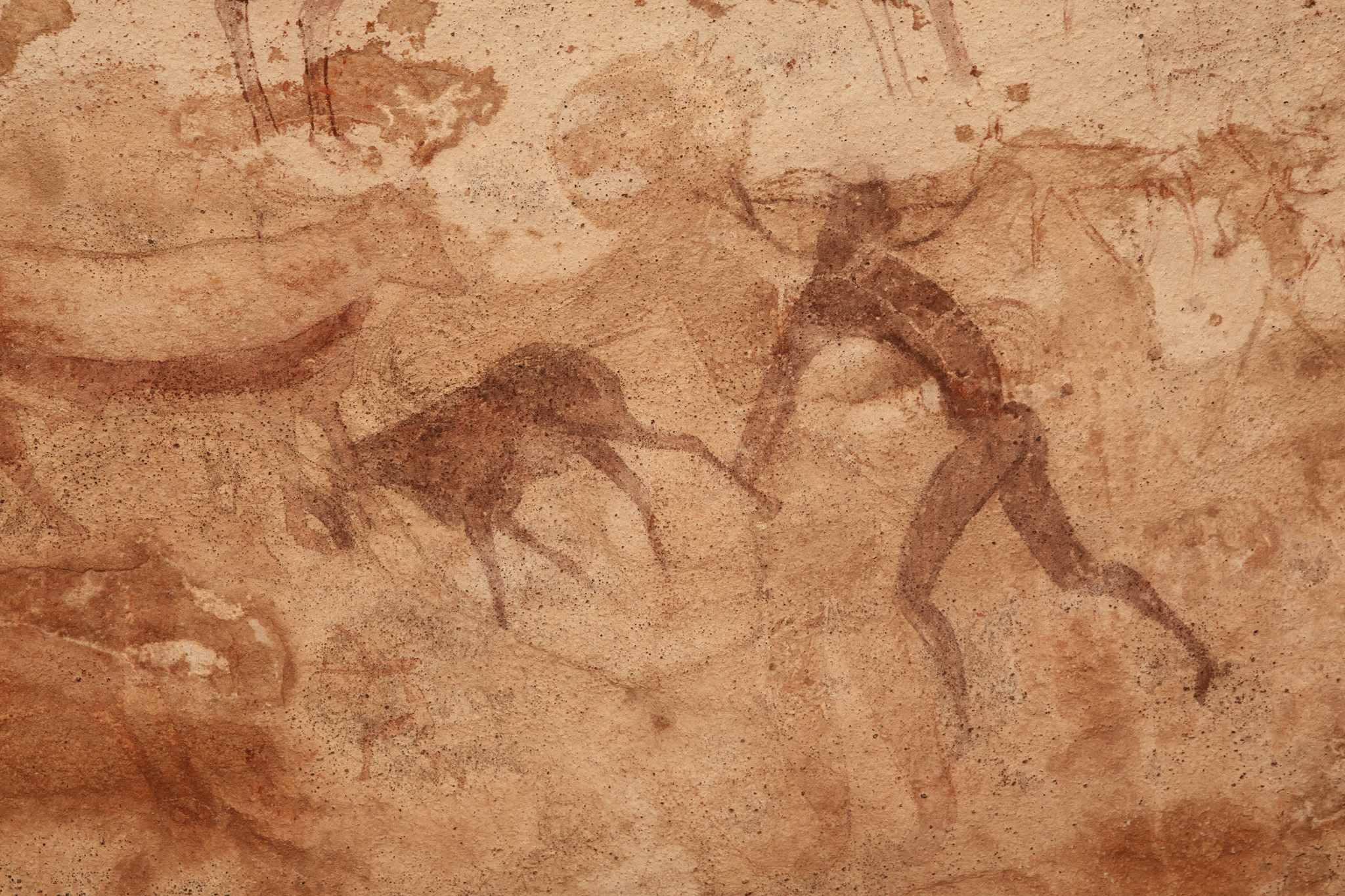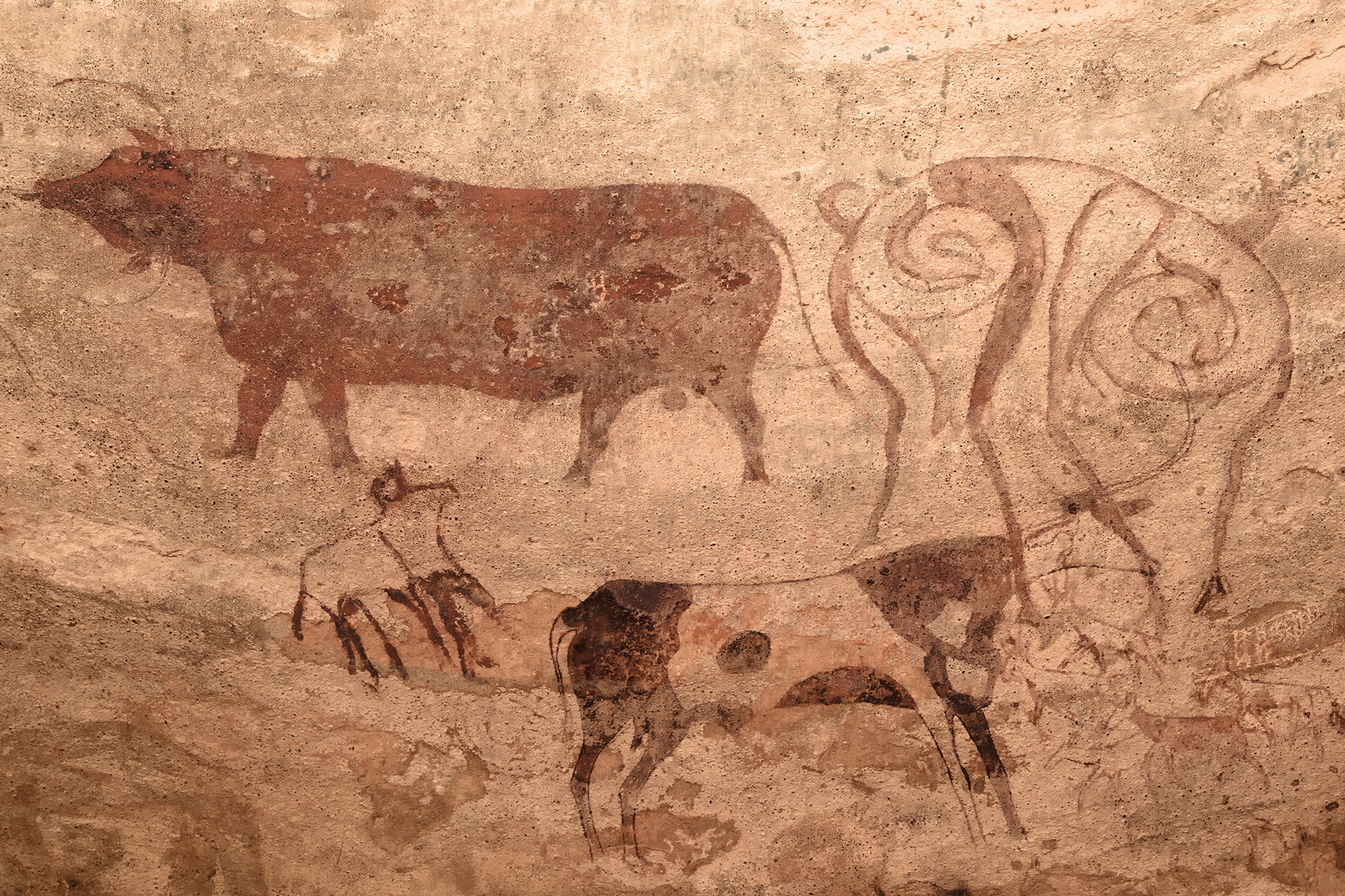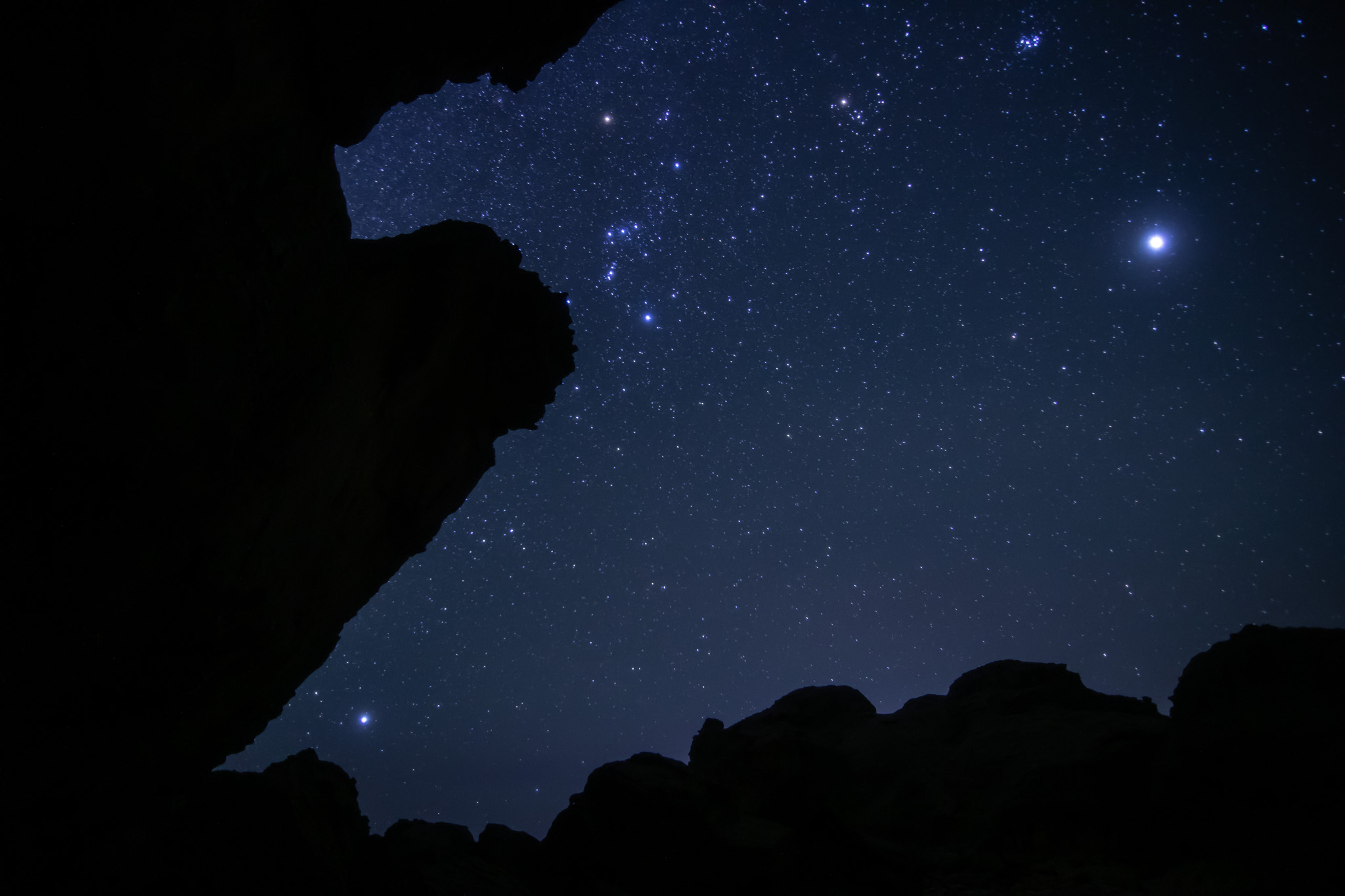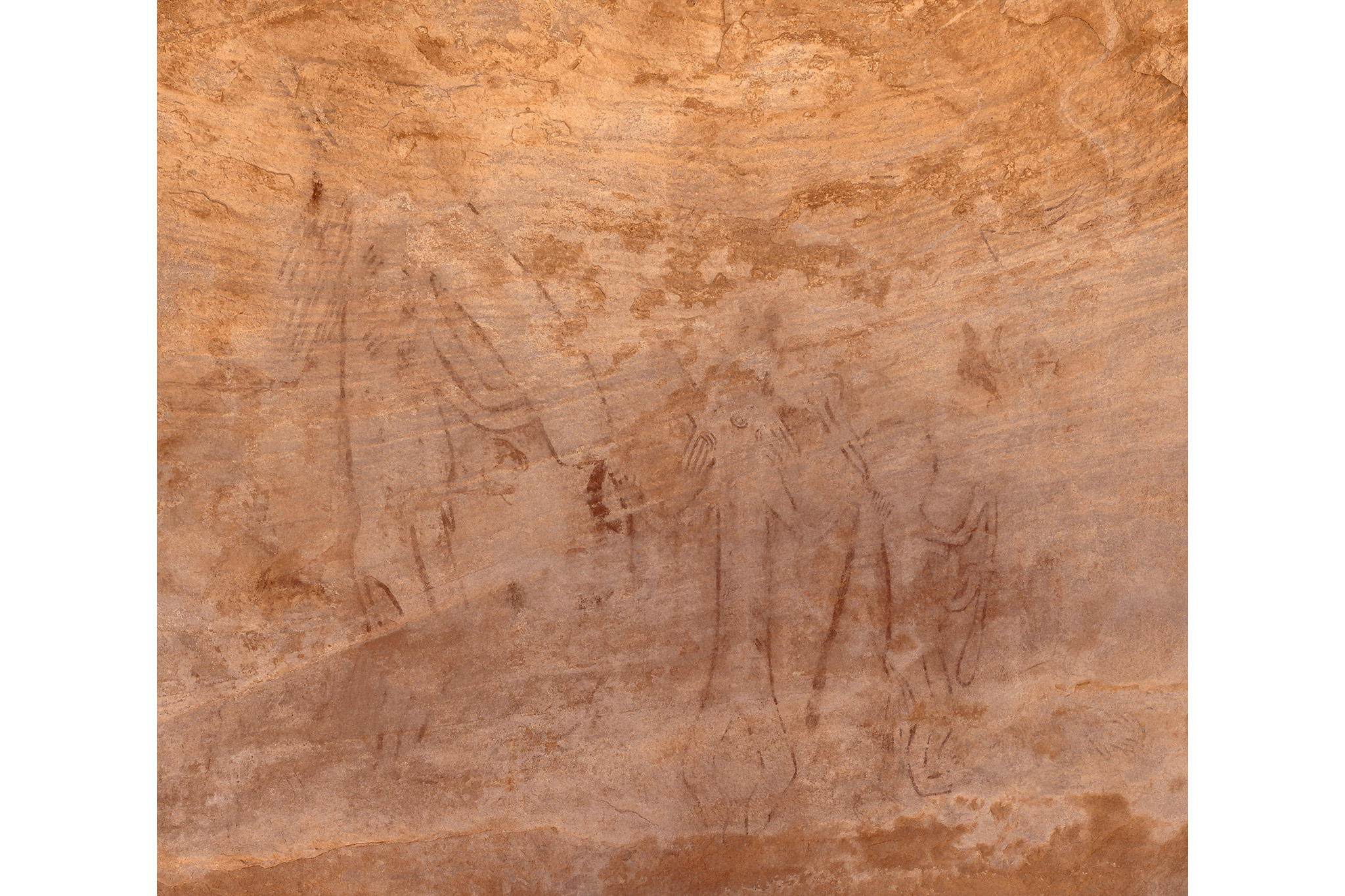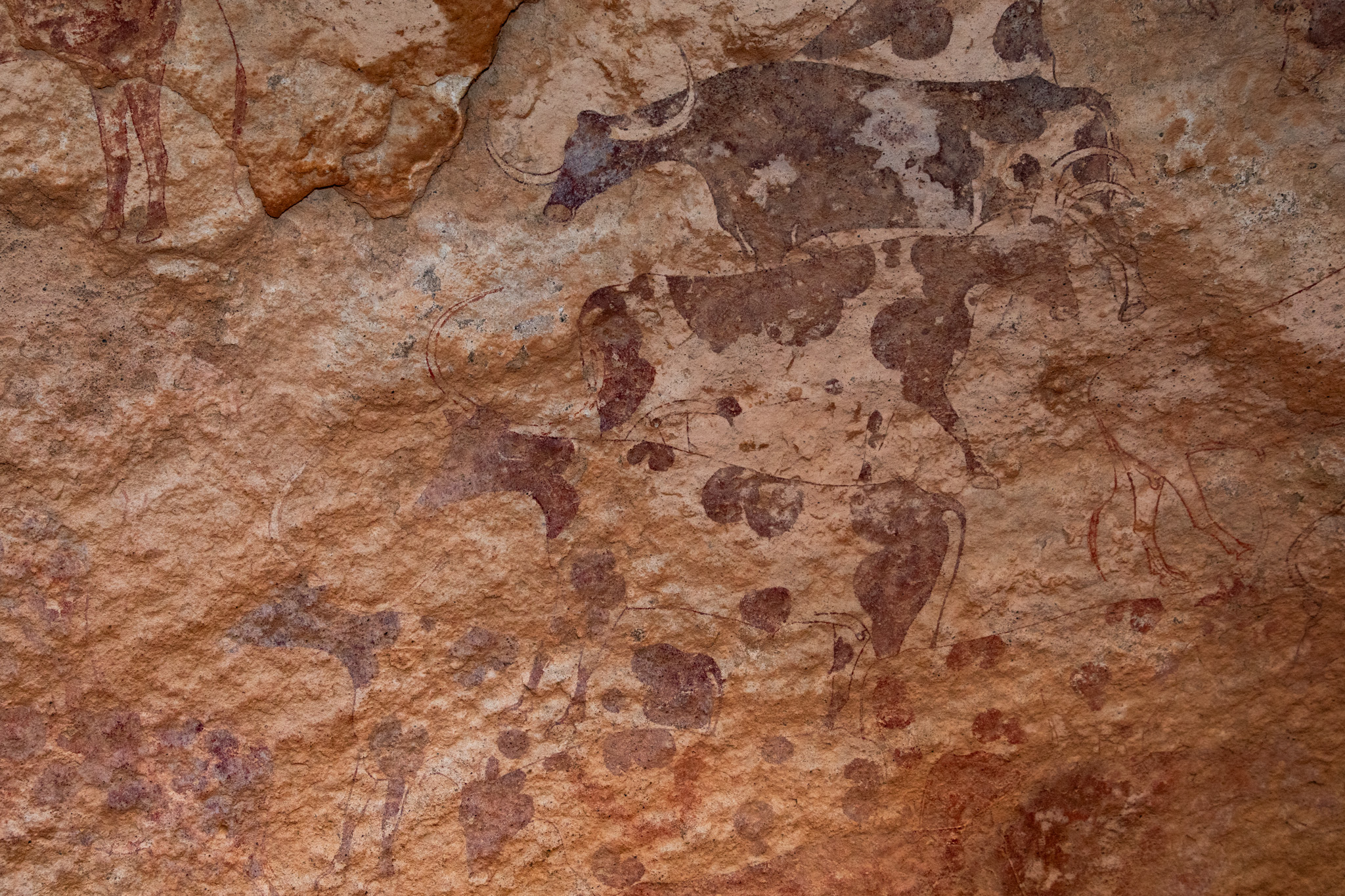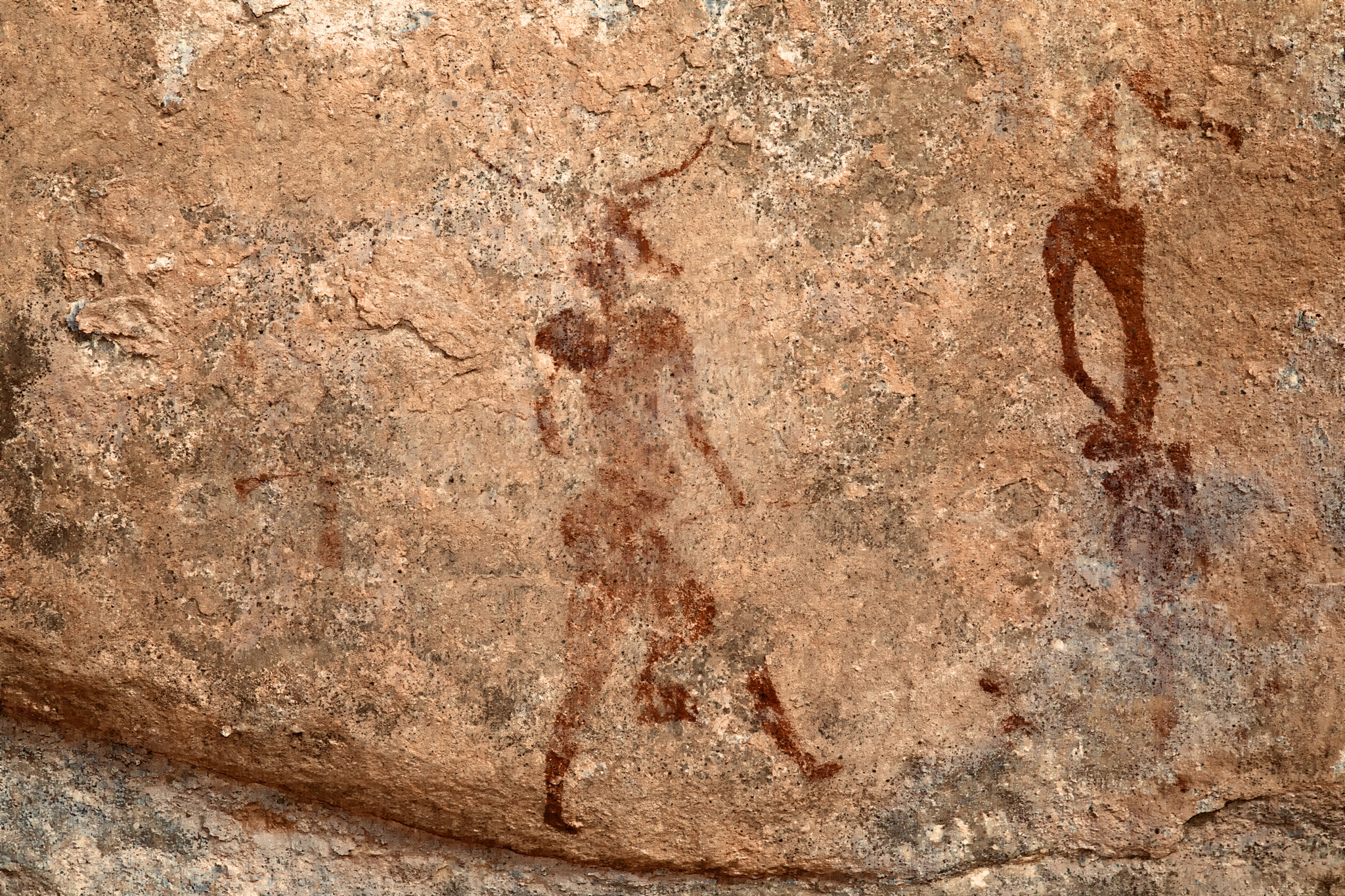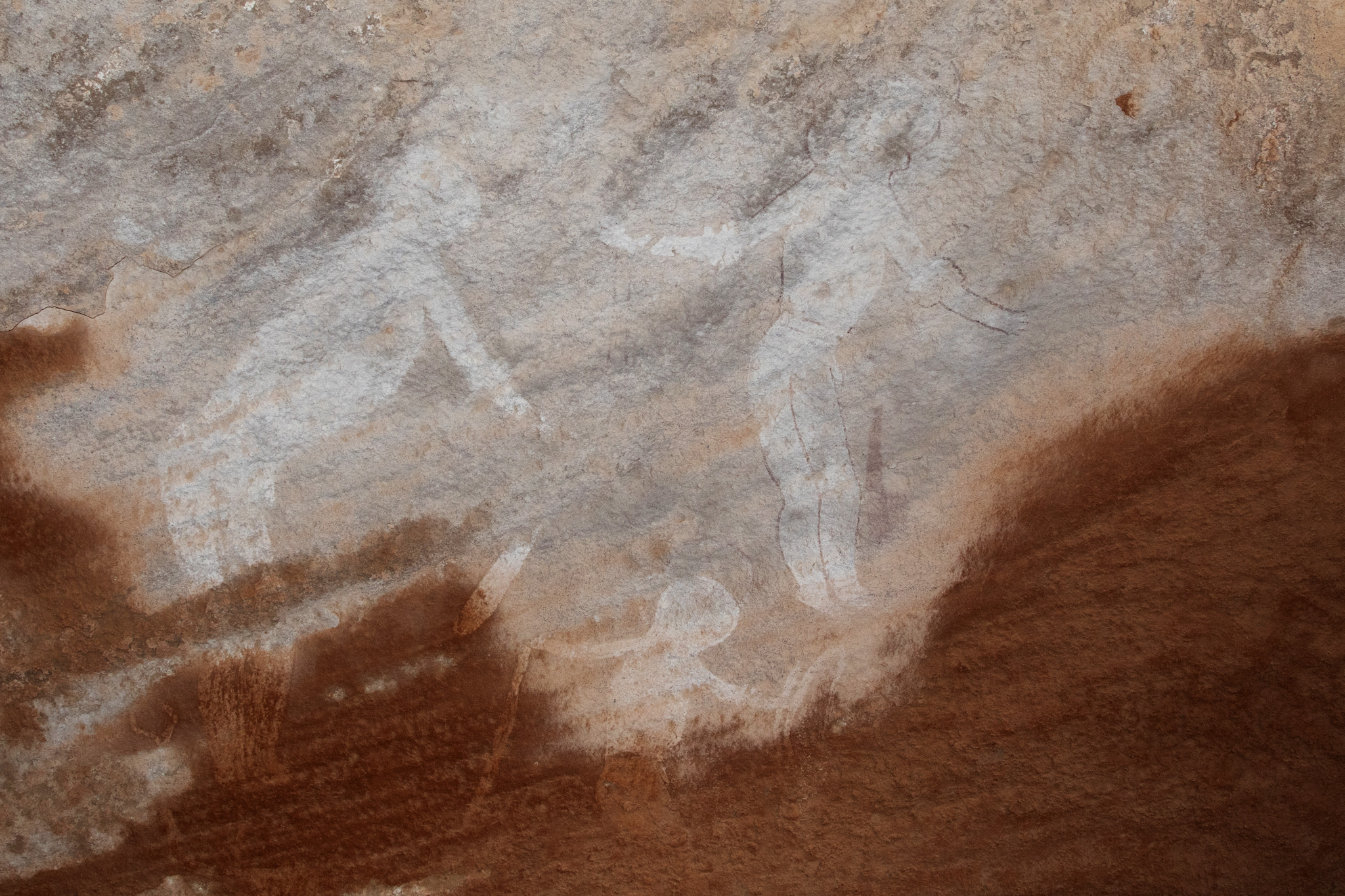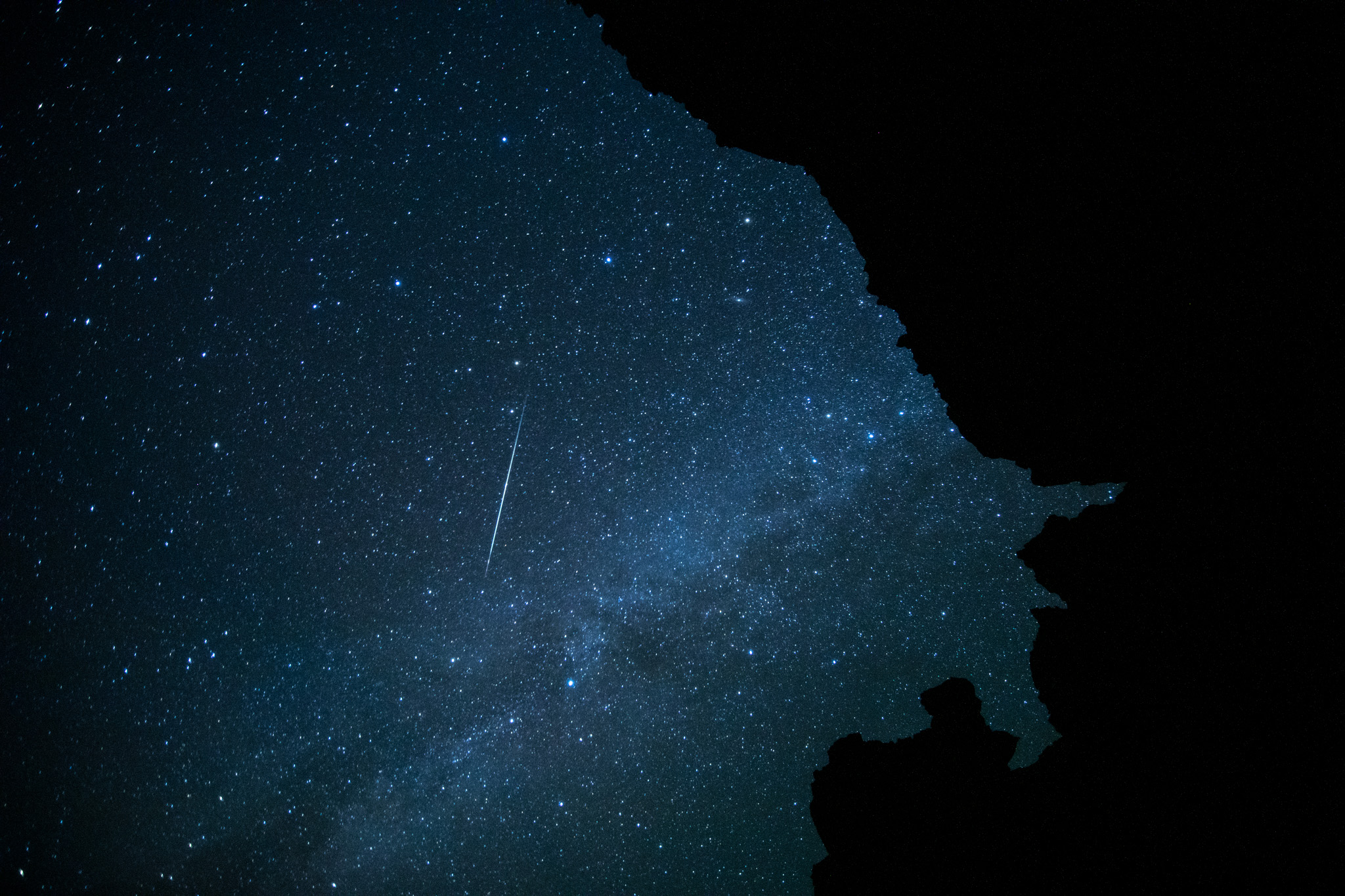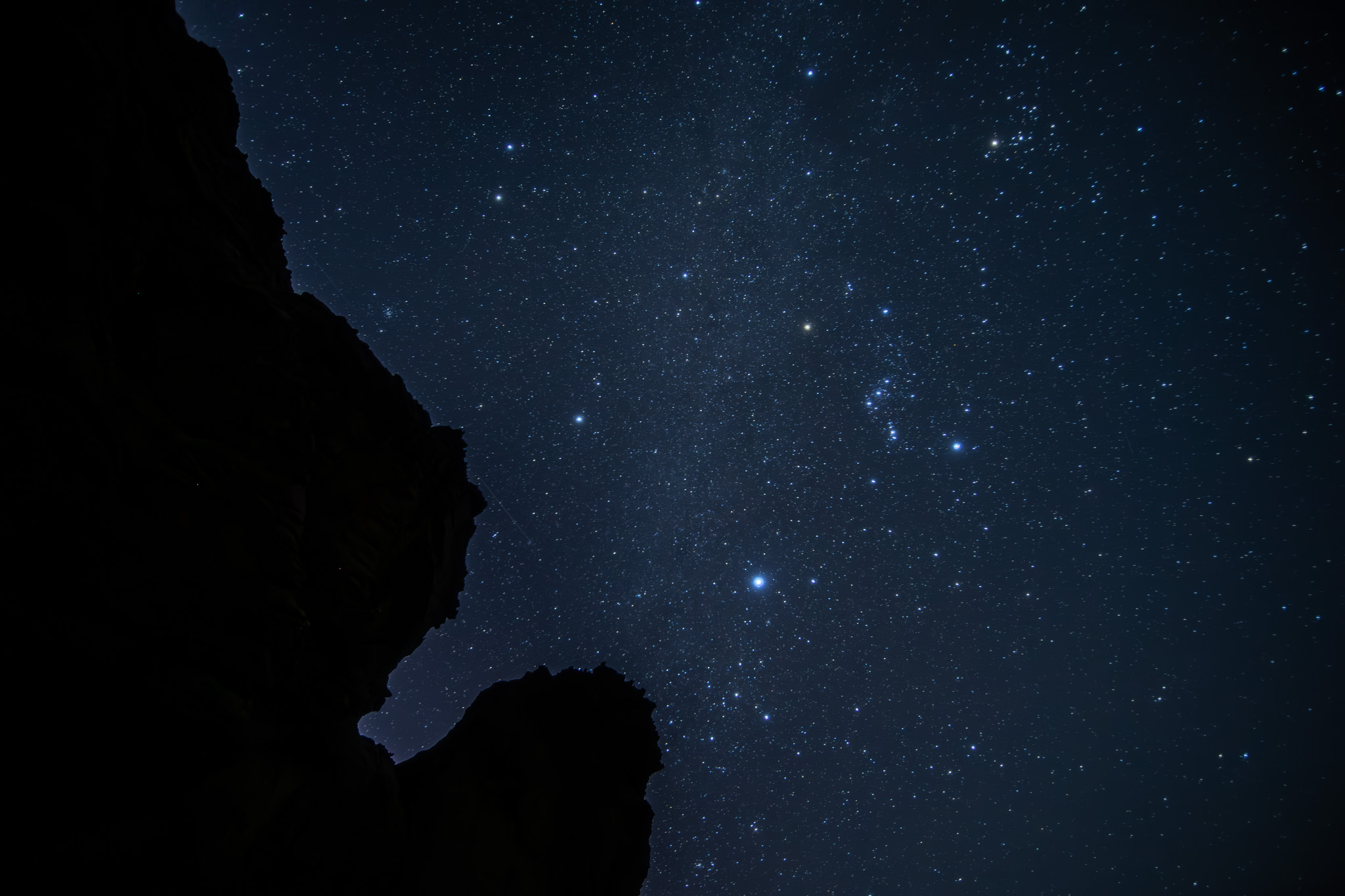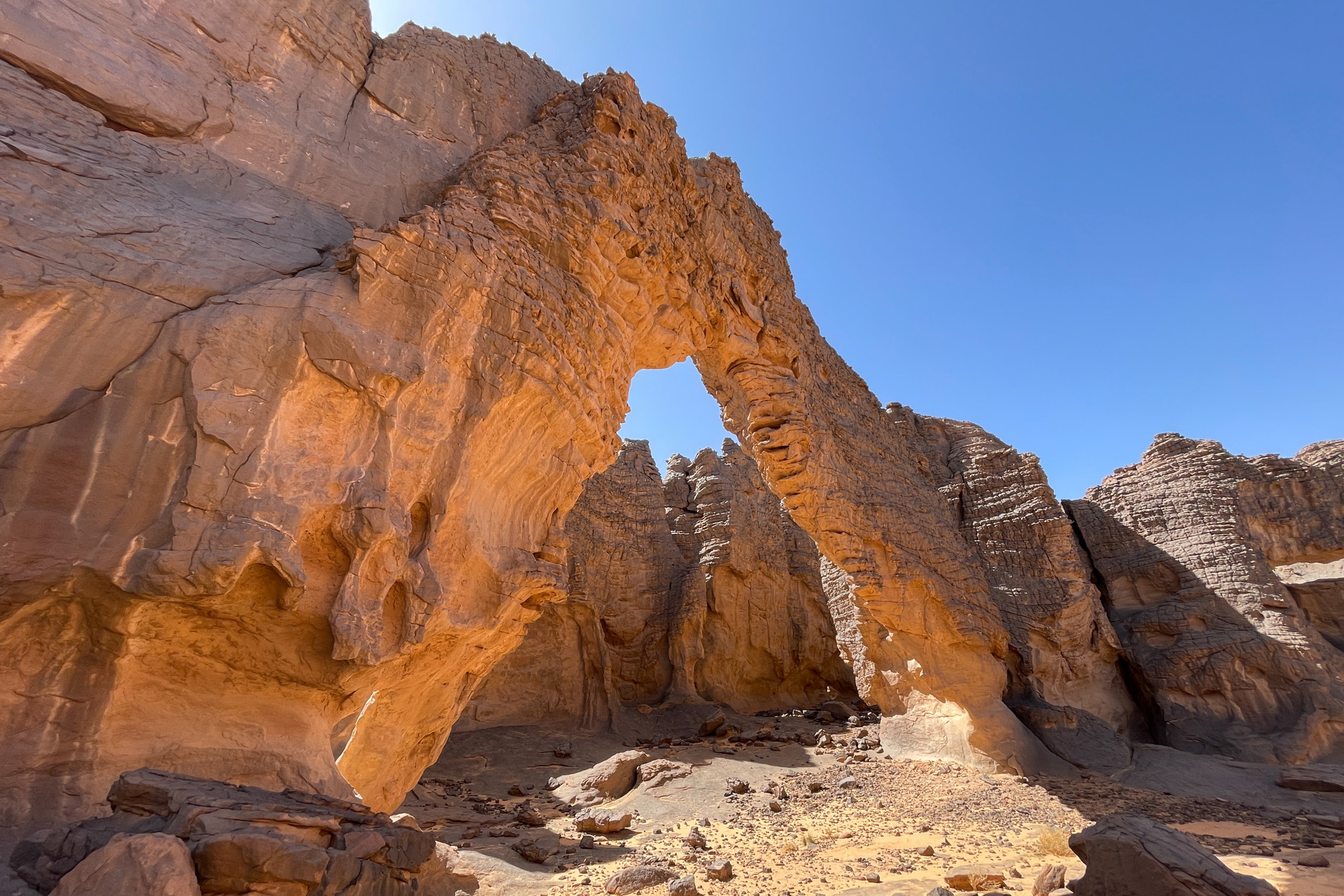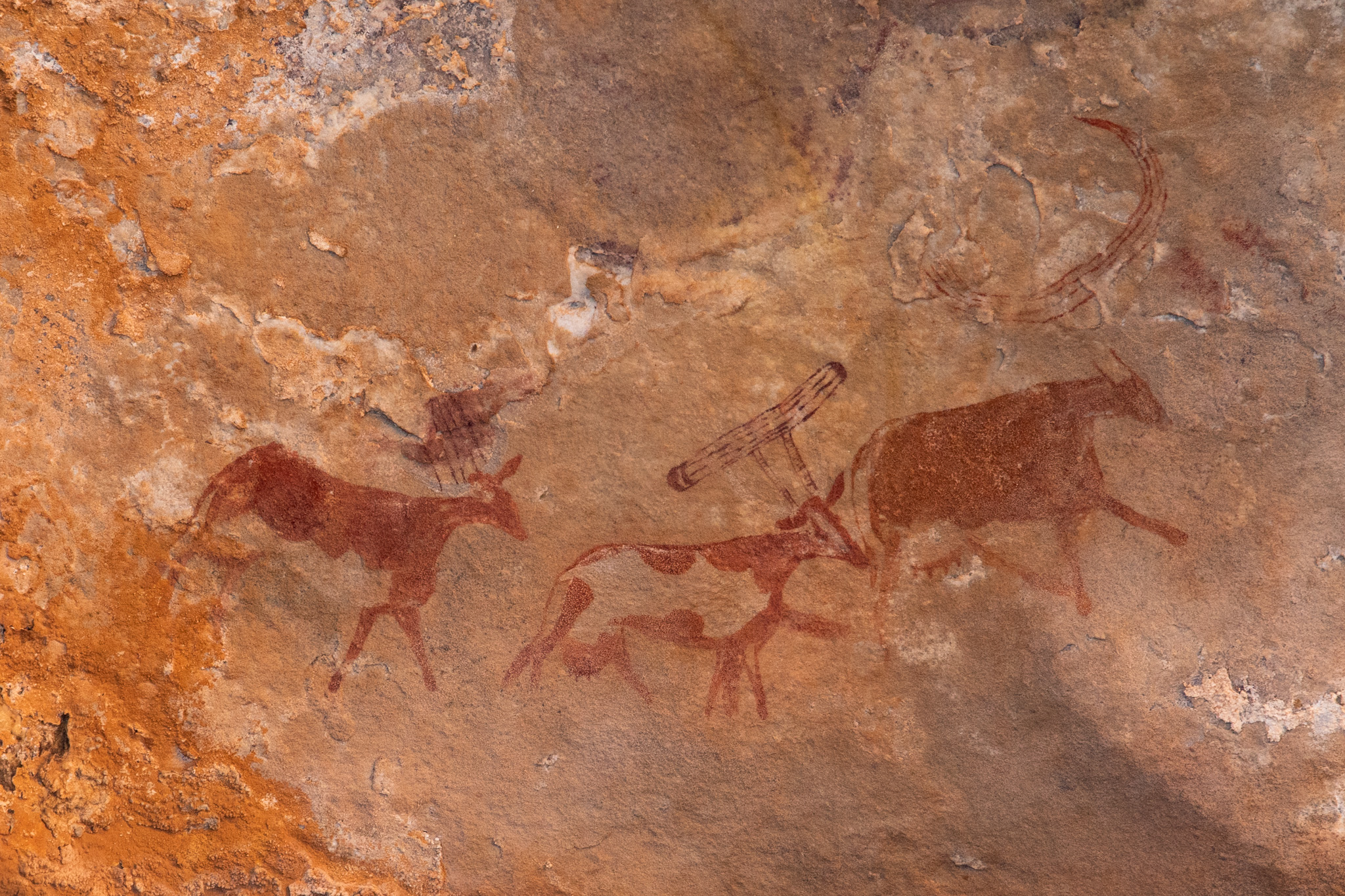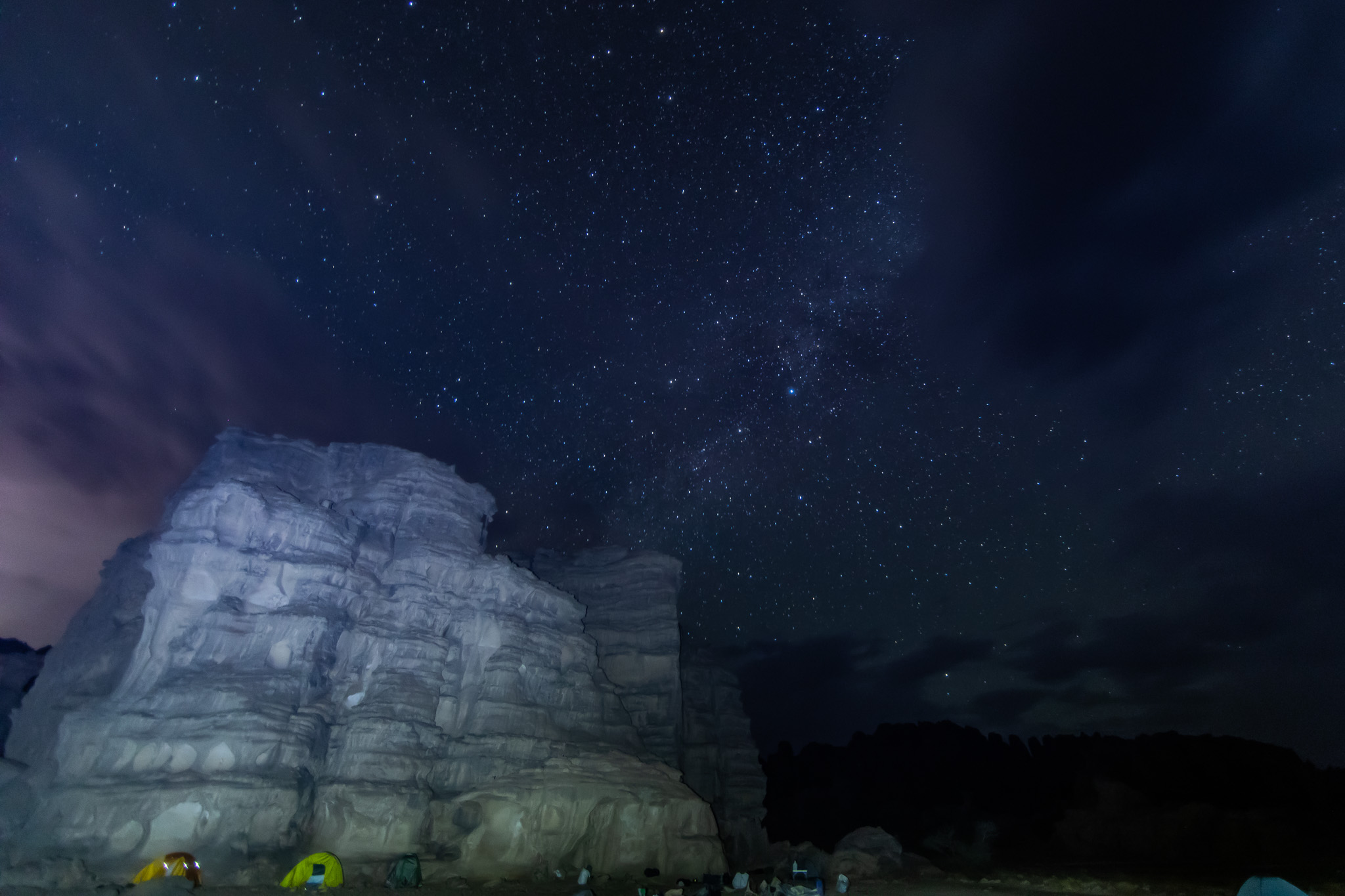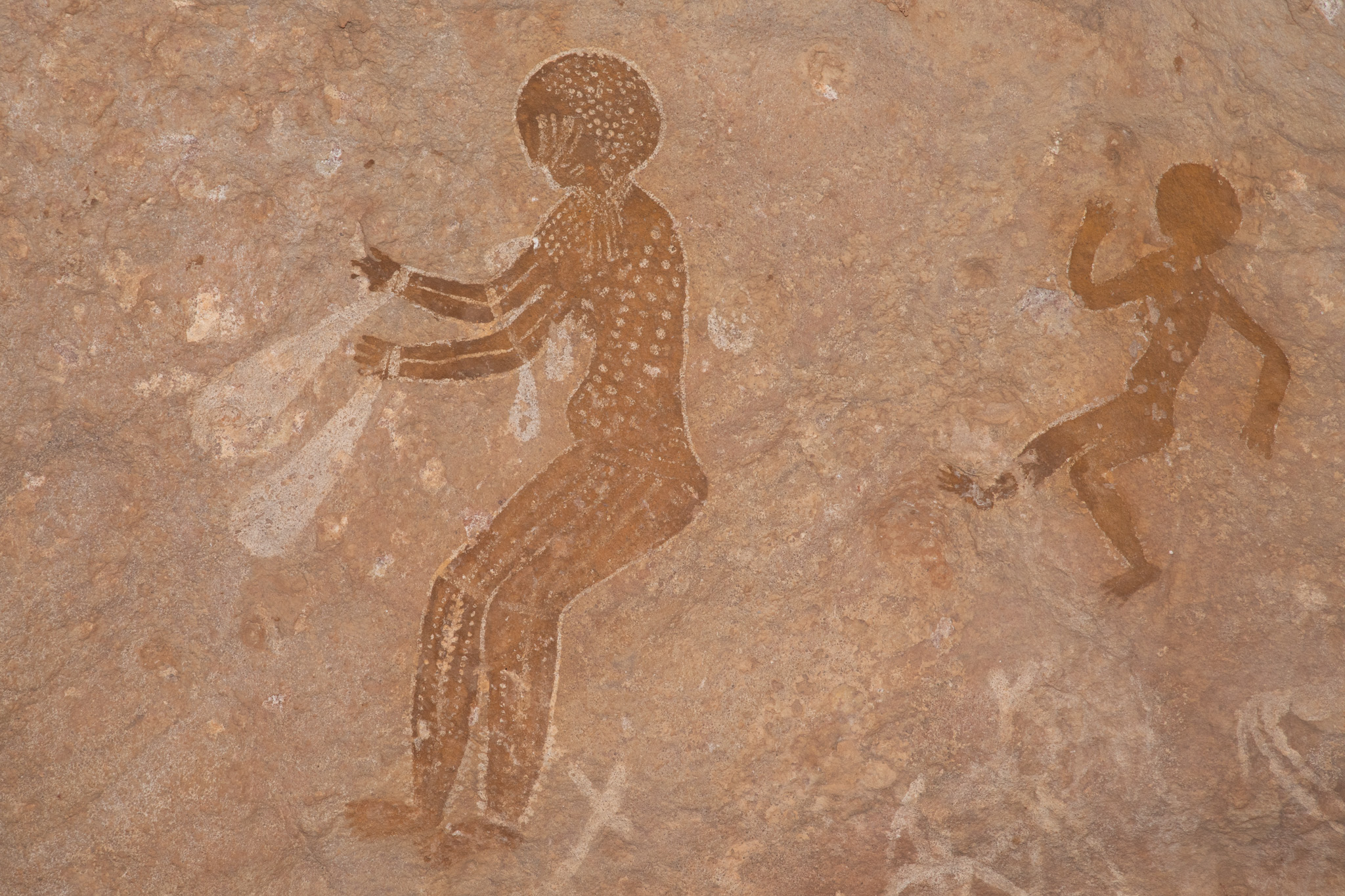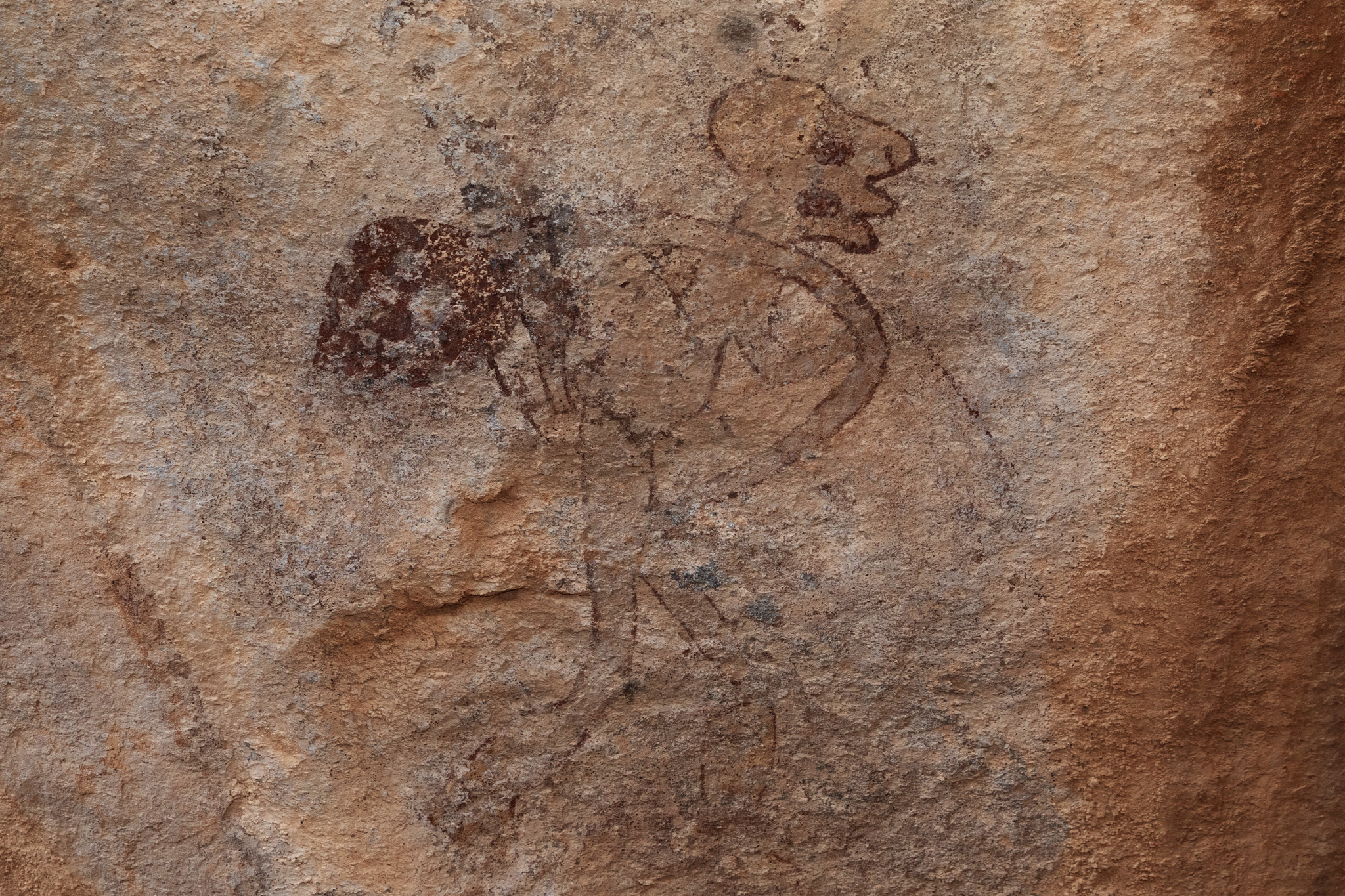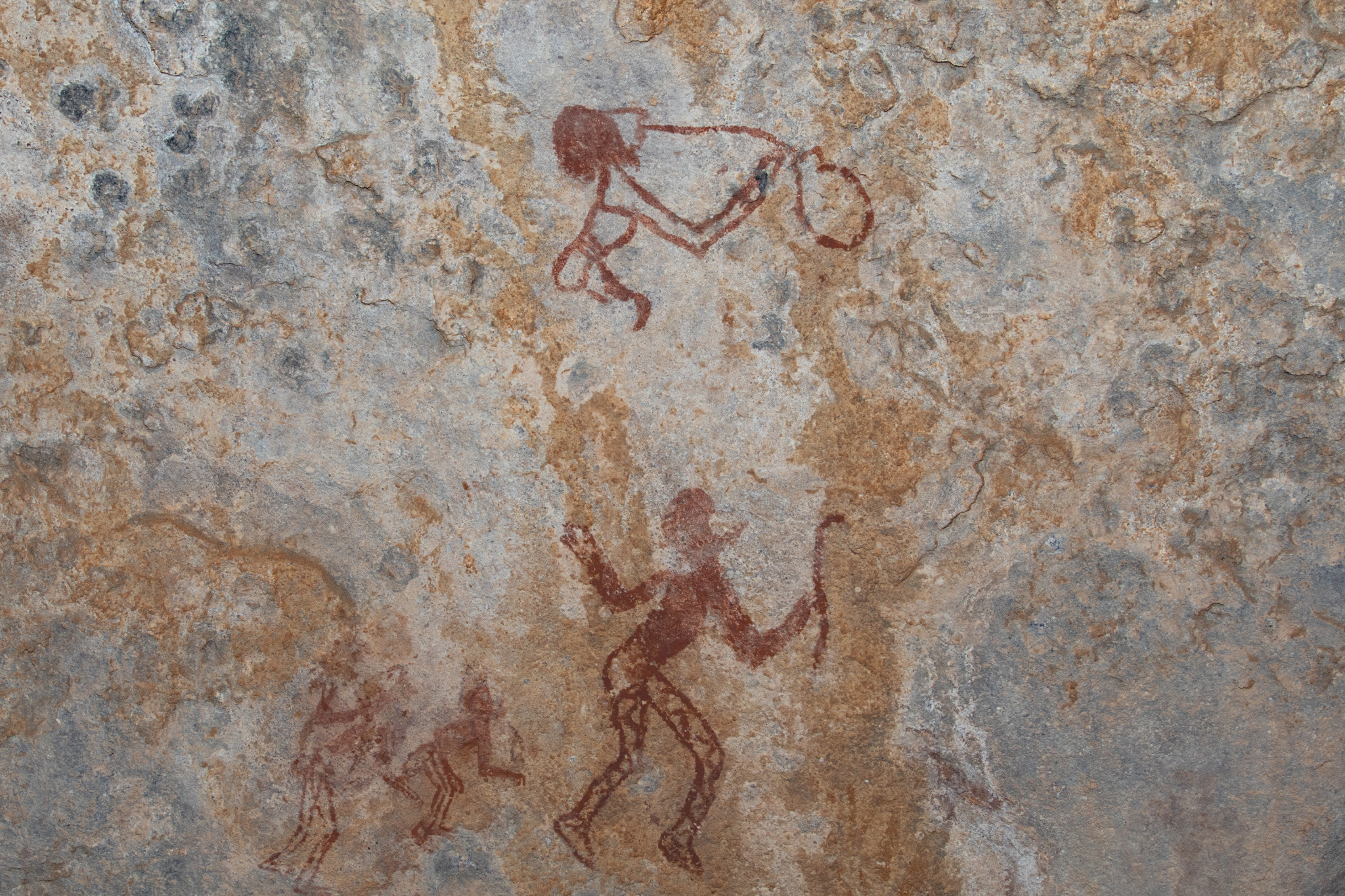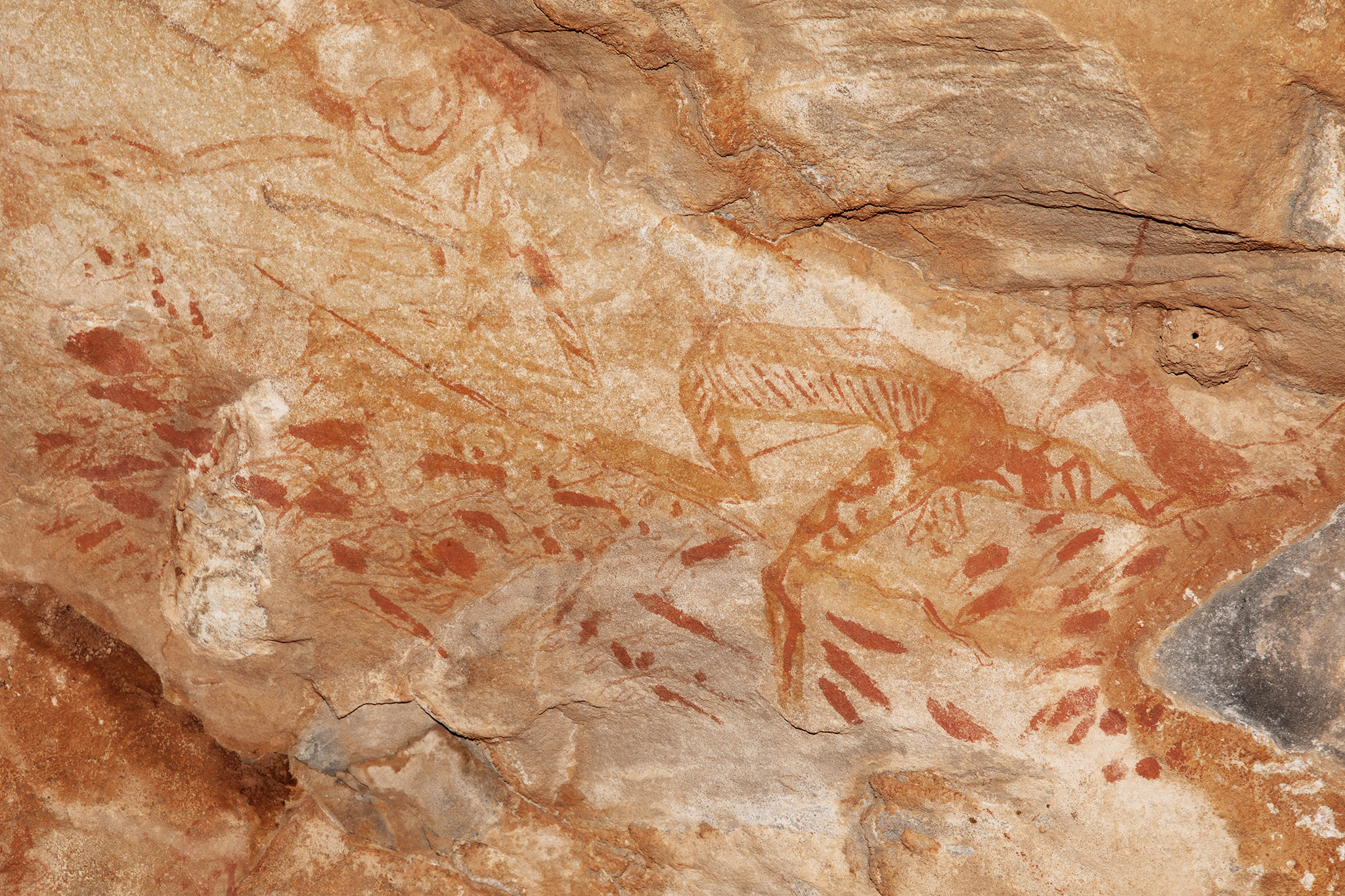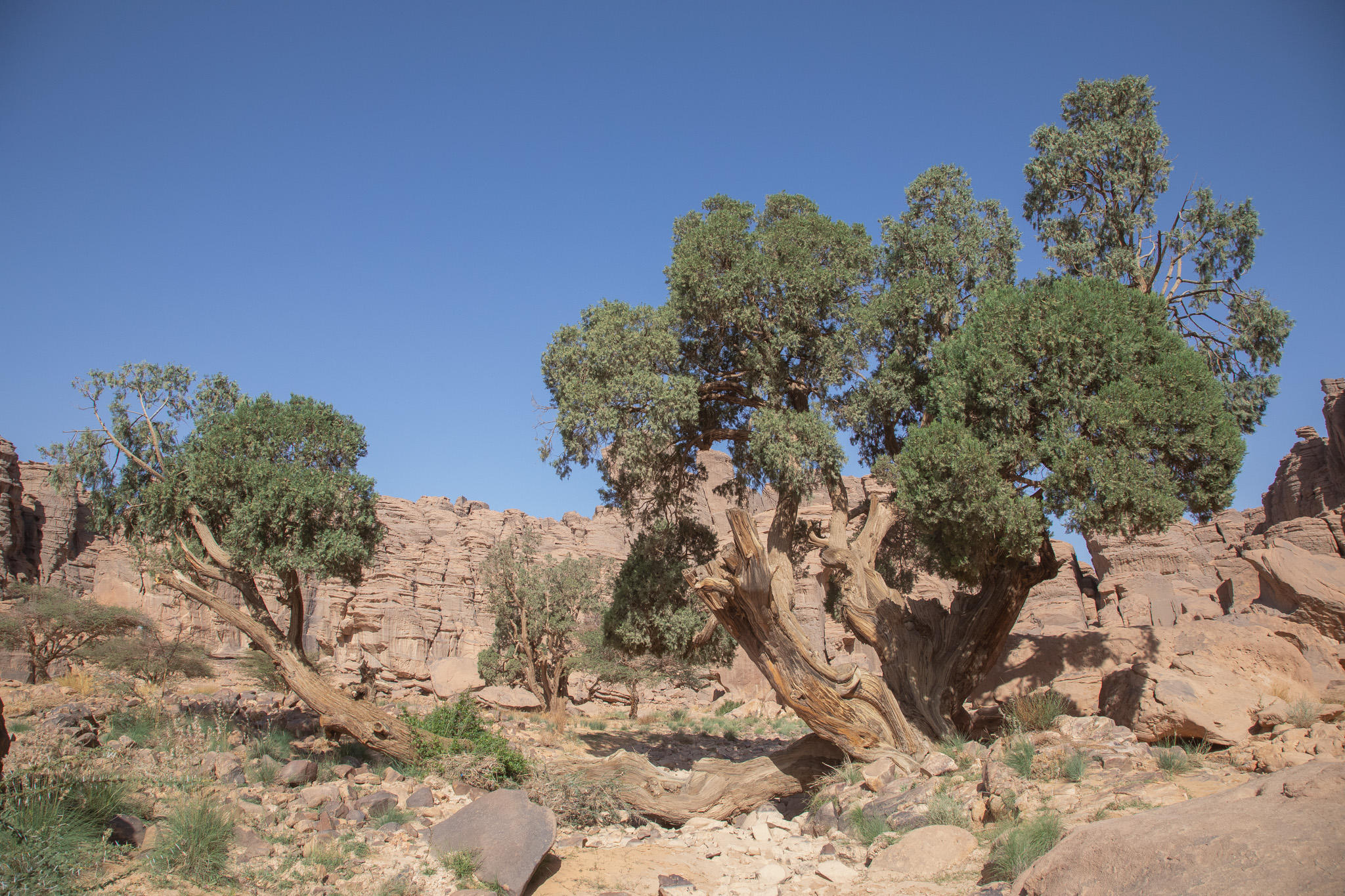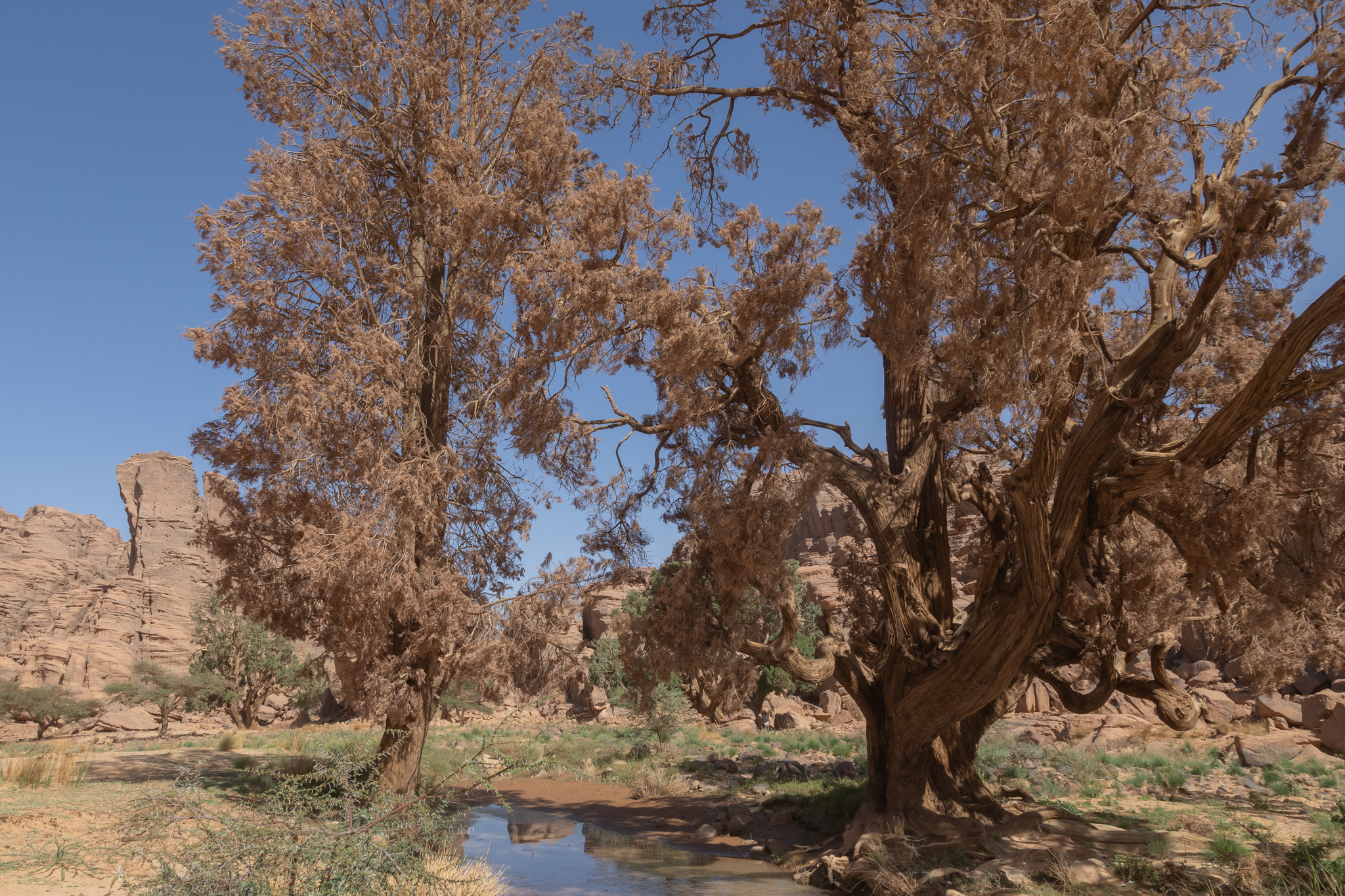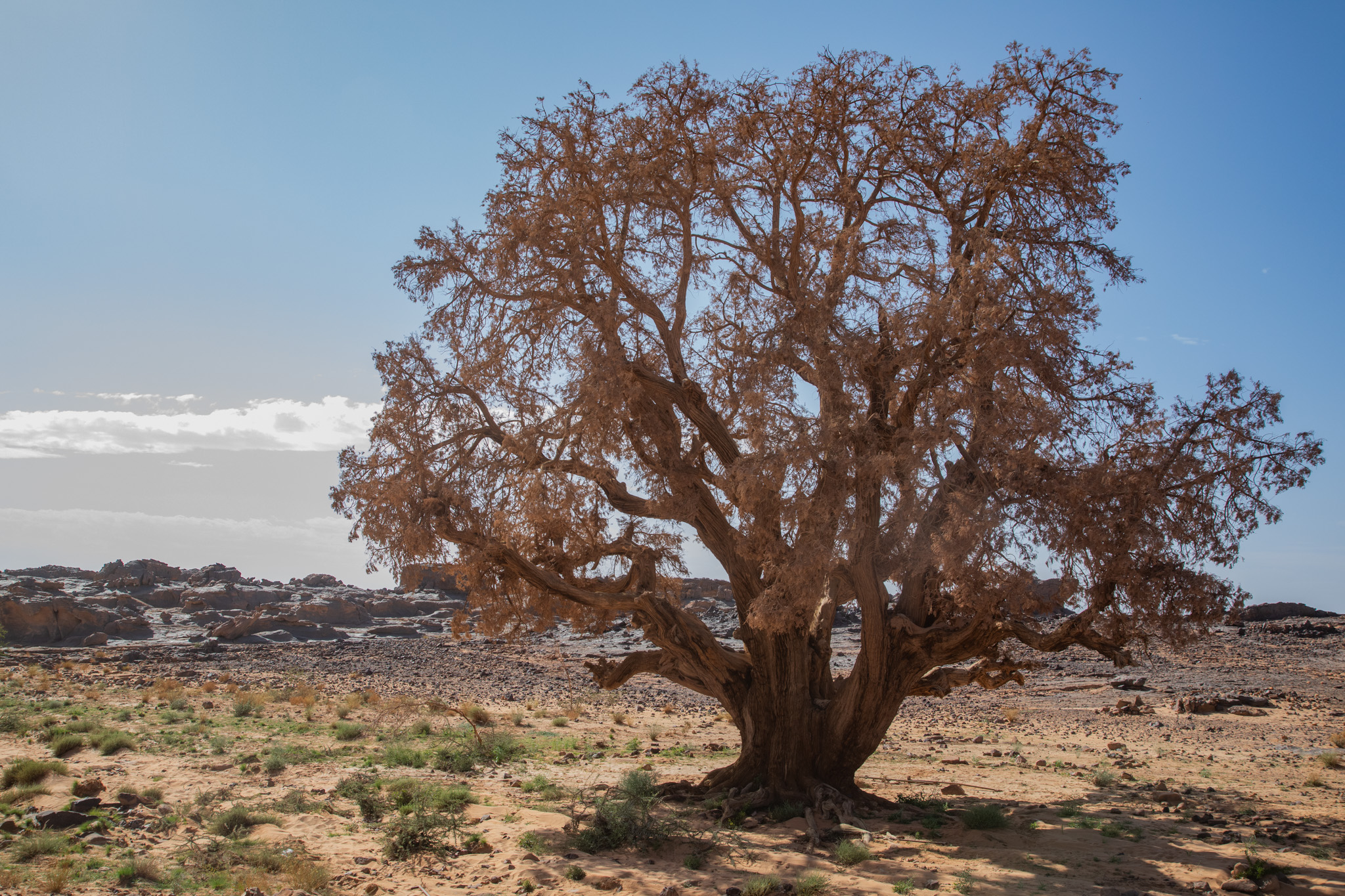Continuing from last year, this is the second part of a trip to visit the rock art for which the Lhote mission produced copies, with the aim of locating them by GPS and documenting the current state of the rock art. Last year, we mainly visited the tourist route where many of the major rock art were concentrated, whereas this year we visited areas off the tourist route in the north-west of the region.
Last year’s sites had many paintings from the hunter-gatherer period, and large paintings such as ‘Great God’ and ‘Martian’ stood out, but this year’s sites had fewer paintings from the hunter-gatherer period and were dominated by pastoralist rock art. In addition, there were few large sites with a high concentration of rock art, except in Tisukai. The number of paintings reproduced by the Lhote mission was 617 on last year’s route, 260 on this year’s route, 827 in total after deducting overlapped sites, with a discovery rate of around 60% overall. Many of the paintings are no longer visible to the naked eye, making it difficult to improve the discovery rate.
Despite the difficulty, we could see many of the excellent paintings we had hoped to see. The diversity and quality of the work was astonishing. They vividly depicted scenes of life, such as various animal hunts, beautiful herds of cattle and sheep, life in camps and talks with family and neighbors. On the other hand, many things that do not exist in reality are also depicted. Therianthropes with heads like a bird, a lion and an antelope, anthropomorphic monkeys and antelopes. Even strange creatures that do not exist are depicted. It is assumed that during the long years when the Sahara was green, diverse people throughout the ages competed with each other to paint rocks shelters, which led to the development of various methods of expression as well as the improvement of depiction techniques. Such diversity and quality is unparalleled in the world. Diversity is the essence of Tassili rock art. (Trip in October 2023)
Map of the visited sites (2022 and 2023).
昨年に引き続き、ロート調査隊が模写を制作した壁画を訪ねて、GPSによる場所の特定と壁画の現状を記録する旅の後半編。昨年は主要な壁画が多く集まった観光ルートを主体に訪ねたが、今年はその北西部の観光ルートから外れた地域を訪ねた。
昨年の訪問地には狩猟民時代の壁画も多く、「白い巨人」や「火星人の神」など有名な大型壁画も目立ったが、今年の訪問地は狩猟民時代の壁画は少なく牧畜民の壁画が主体であった。また、ティスーカイ以外は壁画集積度の高い大きなサイトが少なく、サイト間で歩く距離も長い。ロート隊制作の壁画数は、昨年のルート内では617点あったが、今年のルート内では260点、一部重複を差し引いて全体で827点で、それらの発見率は全体で6割程度であった。肉眼で見えなくなっている壁画が多く、なかなか発見率が上がらない。ロート隊は濡らしたスポンジで壁面をぬぐって壁画を浮かび上がらせてトレース(複写)したが、肉眼では壁画があることすら分からないことが多い。地図やGPSデータがあっても精度が悪く、発見に至らない場合も多い。また、部分的にか見えない壁画は、帰国後に画像鮮明化処理をして模写との照合を行ったが、この作業に2か月近くを要した。
大型で華やかな壁画が少なかったものの、優れた壁画を数多く見ることができた。その多様性と質の高さには驚かされるばかりだ。さまざまな動物の狩り、美しい牛や羊の群れ、キャンプでの生活、家族や隣人との語らいの場などの生活場面が生き生きと描かれている。一方で、現実には存在しないものも多く描かれている。鳥、ライオン、アンテロープなどの頭を持った半獣半人、擬人化した猿やアンテロープ。さらには存在しない不思議な生き物までもが描かれている。サハラが緑だった長い年月、時代を超えて多様な人々が競い合うように壁画を描くことで、描写技術が高まるとともに様々な表現方法が生まれたものと推測する。これだけの多様性と質の高さは世界に類例を見ない。この多様性こそがタッシリ壁画の真髄と言える。(2023年10月旅行)
PANORAMIC PHOTOS パノラマ写真
Other panoramic photos of Tassili n’Ajjer are available. 前回までに撮影したタッシリのパノラマ写真はこちらです: https://hanafusa.info/project/saharan-rock-art/
| Nefertiti,Techekalauen, October 2023 (3.78m x 1.95m) | |
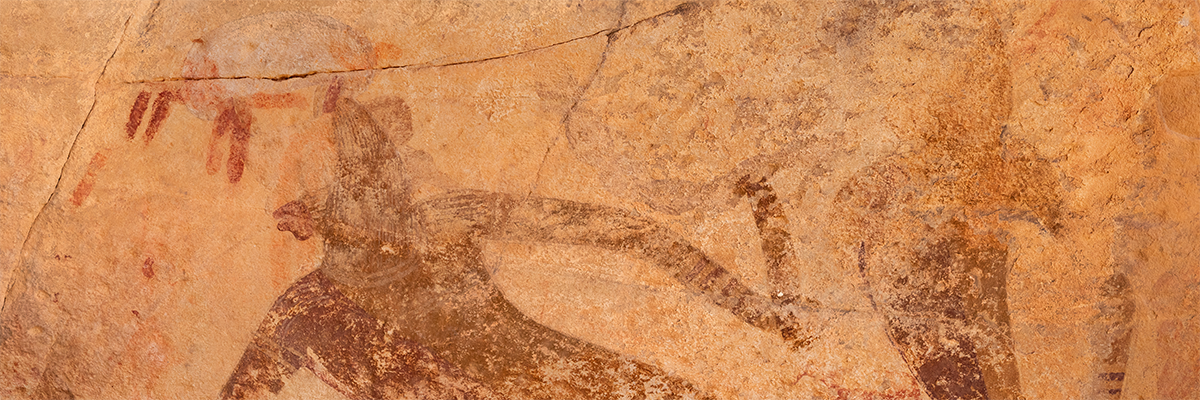 |
|
| ネフェルティティ、テシェカラウエン 2023年10月 (3.78m x 1.95m) |
| Life of Cattle herders, Tissoukai, October 2023 (2.22m x 1.25m) | |
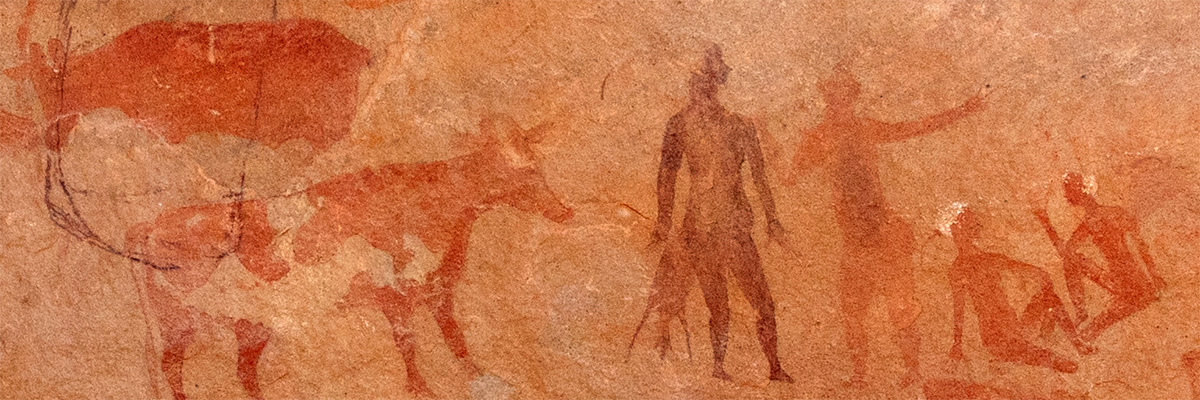 |
|
| 牛飼いの暮らし、ティスーカイ、2023年10月撮影(2.22m x 1.25m) |
| Tethered calves, Tissoukai, October 2023 (2.62m x 1.12m) | Outlook |
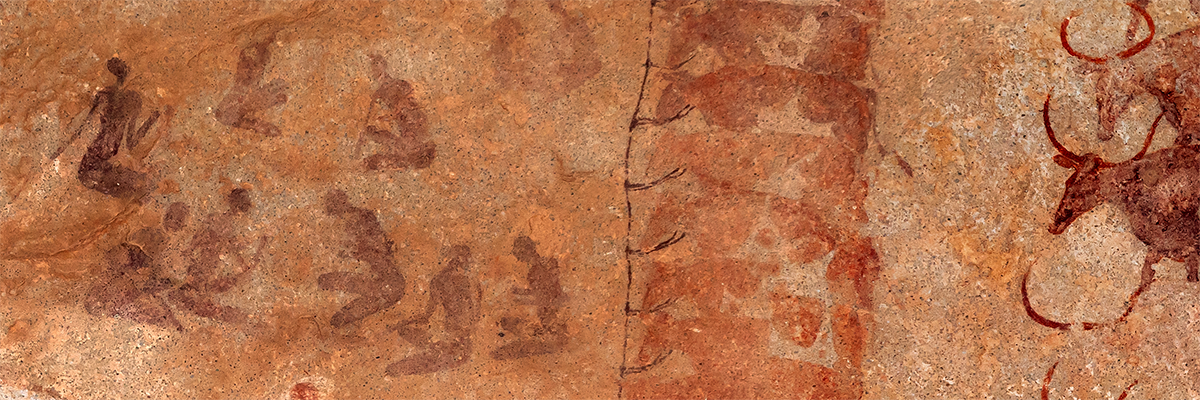 |
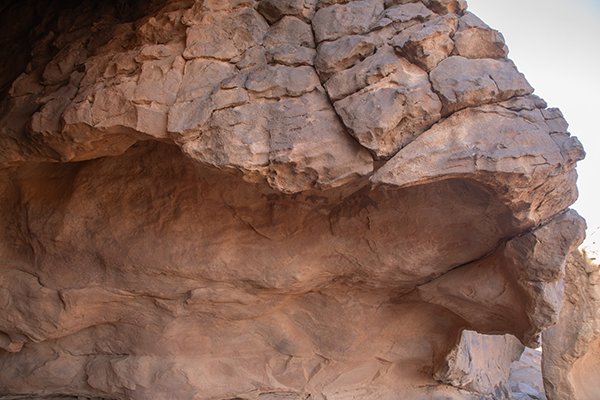 |
| 繋がれた子牛ティスーカイ、2023年10月撮影(2.62m x 1.12m) | 外観 |
| Grand Fresco of Ouan Bender, October 2023 (6.52m x 1.86m ) | Outlook |
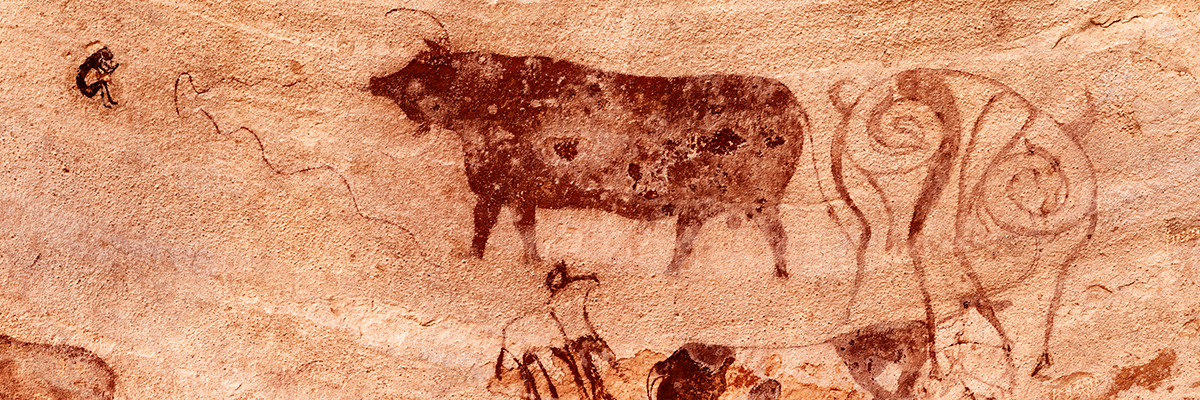 |
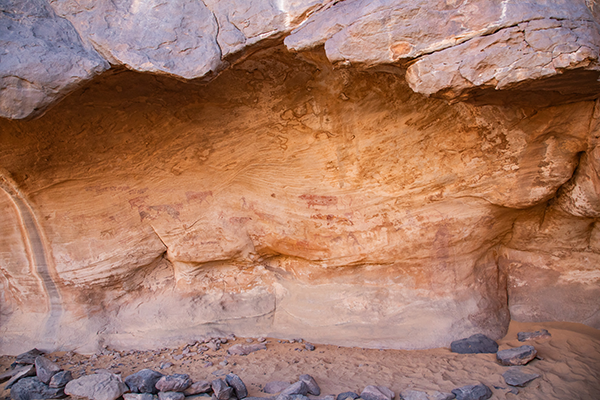 |
| ウアン・ベンダー 2023年10月撮影 (6.52m x 1.86m ) | 外観 |
| Cattle Herd,Ouan Bender, October 2023 (2.4m x 1.57m) | |
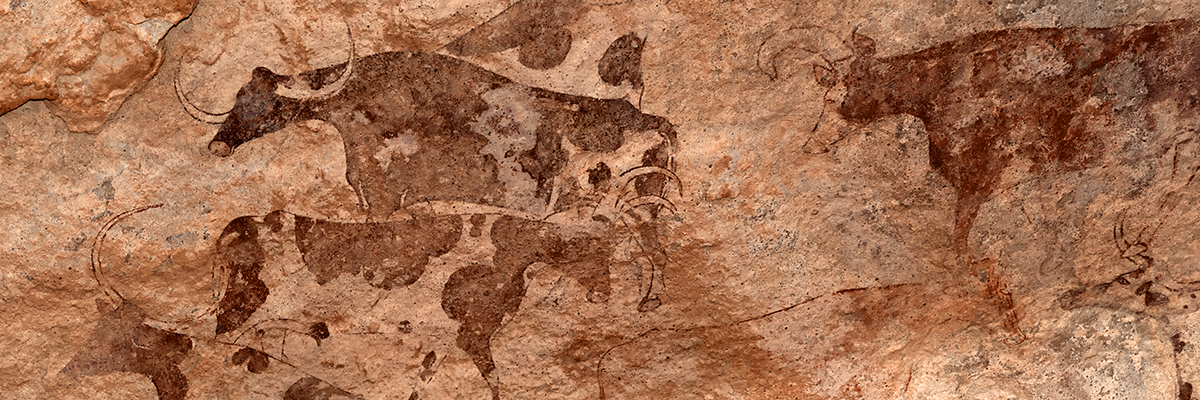 |
|
| 牛の群れ ウアン・ベンダー 2023年10月撮影 (2.4m x 1.57m) |
| Hunters, Tamrit,October 2023 (1.54m x 0.99m) | Outlook |
 |
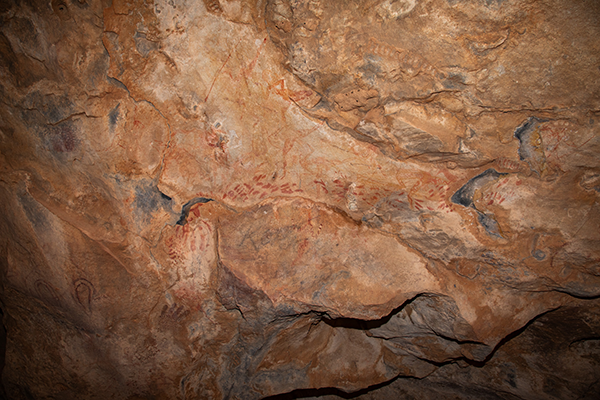 |
| 狩人 タムリット, 2023年10月撮影 (1.54m x 0.99m) | 外観 |
It was very sad that some paintings had problems with the Lhote mission having traced the outlines of the paintings in charcoal or pencil and left them without removal after the reproduction process. These were mostly fine lines and looked like pencil marks. It is assumed that pencil was used because charcoal makes the lines thicker and it is difficult to trace fine outlines. The techniques of wetting the rock surface or directly copying on tracing papers (flower wrapping papers) were used until the 1960s for cave paintings in France, although it is now prohibited. However, it is difficult to imagine that this method of tracing by applying charcoal or pencil directly to the painted rock surface, a technique that is clearly damaging the paintings, was also used outside Tassili.
Experiments show that charcoal traces disappear when a wet sponge is lightly applied, but pencil traces do not disappear until the sponge is pressed against the surface and wiped 4-5 times. Charcoal traces were made since the 1956-57 mission and there are probably a significant number of them, but most are washed away after the copy work and leave no visible traces. Pencil traces, on the other hand, can further damage the paintings when washed away. It is highly likely that the pencil traced paintings were not intended to be restored to their original state from the outset. It is inconceivable that an obvious act of damaging the cultural heritage itself in order to copy it would have been permitted even 60 years ago. The achievements of the Lhote missions are very significant, but on the other hand they are responsible for the damage to the valuable cultural heritage.
ロート隊が模写を制作する工程で、木炭あるいは鉛筆で壁画の輪郭をなぞってそのまま放置した問題が相当数の壁画に見られたのは大変残念であった。その多くが細い線で鉛筆跡のようであった。木炭では線が太くなり、細かい輪郭線をなぞるのが難しいため鉛筆を使ったものと思われる。壁面を濡らしたり、トレーシングペーパー(花束の包み紙)を押し当ててトレースする模写手法は、現在では当然のことながら禁止されているが、1960年代までフランスの洞窟壁画などでも行われていた。しかし、壁画を傷つけることが明白な手法である、壁画面に直接木炭や鉛筆を当ててトレースする模写手法については、当時でも認められていたとは考えにくく、タッシリ以外でも行われていたとは思えない。
実験をしてみると、木炭跡は濡らしたスポンジを軽く当てると消えるが、鉛筆跡はスポンジを押し当てて4-5回ぬぐわないと消えない。木炭によるトレースは1956-57年調査の段階から行われており、相当数あったと思われるが、ほとんどは作業後に洗い流されて目に見える痕跡は残っていないようだ。一方、鉛筆跡は洗浄しても壁画をさらに傷つけることになる。鉛筆でトレースした壁画は、最初から現状復帰する考えがなかった可能性も高いのではないか。文化財のコピーをするために、文化財自体を傷つけることが明白な行為は、60年前であっても許されていたとは考えられない。フランスの洞窟壁画で行われていたら大きな問題となっていたはずである。ロート隊の業績は非常に大きいが、一方で貴重な文化財の損傷については大きな責任がある。


